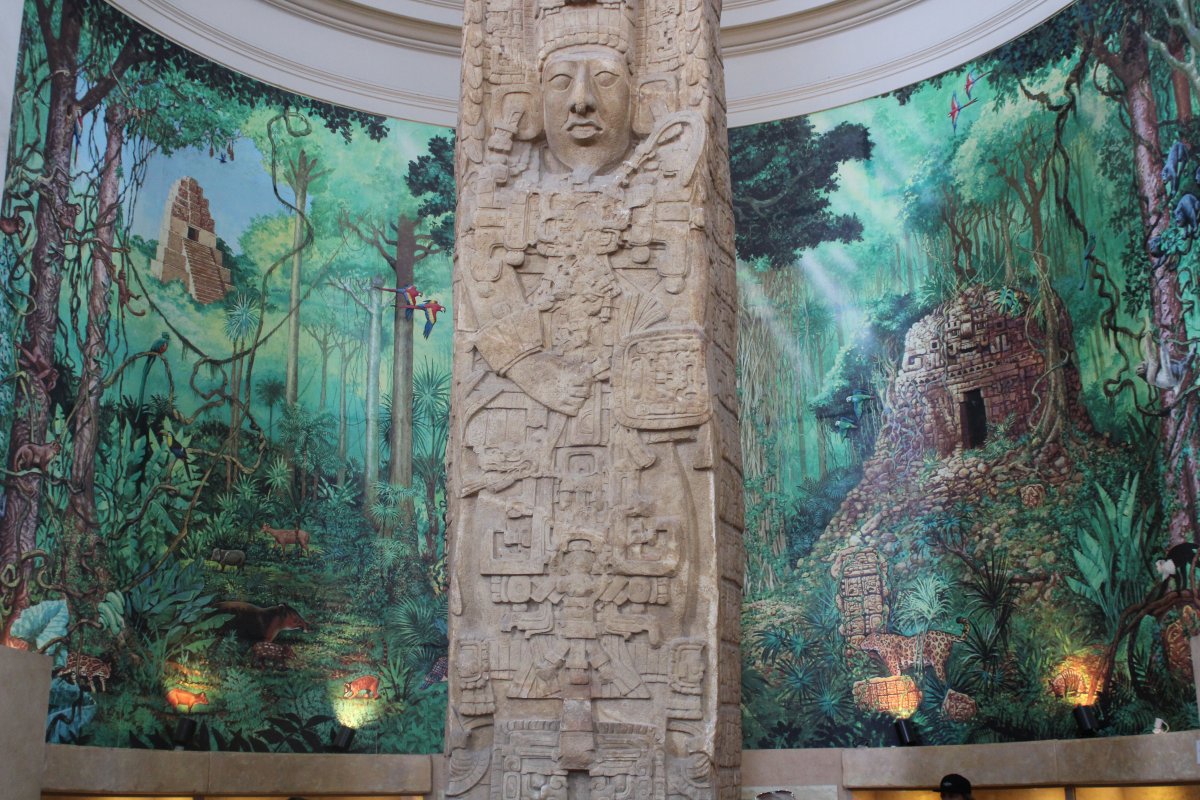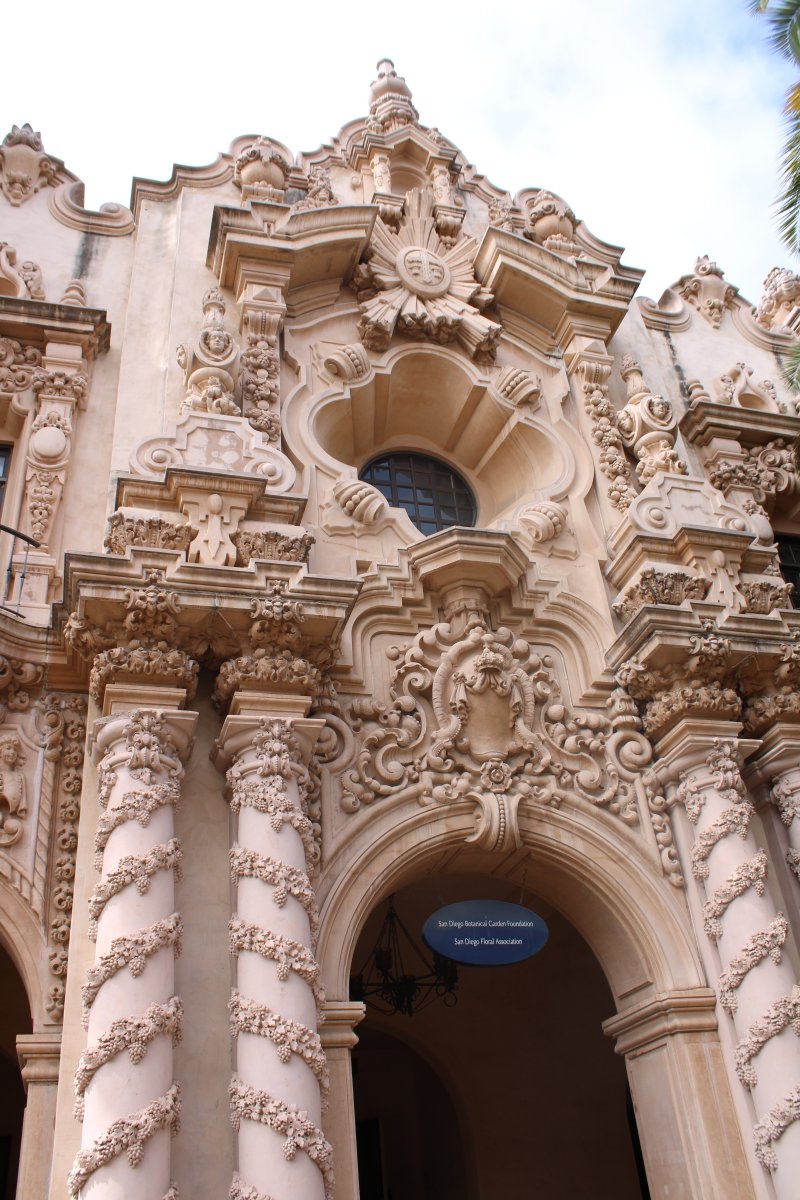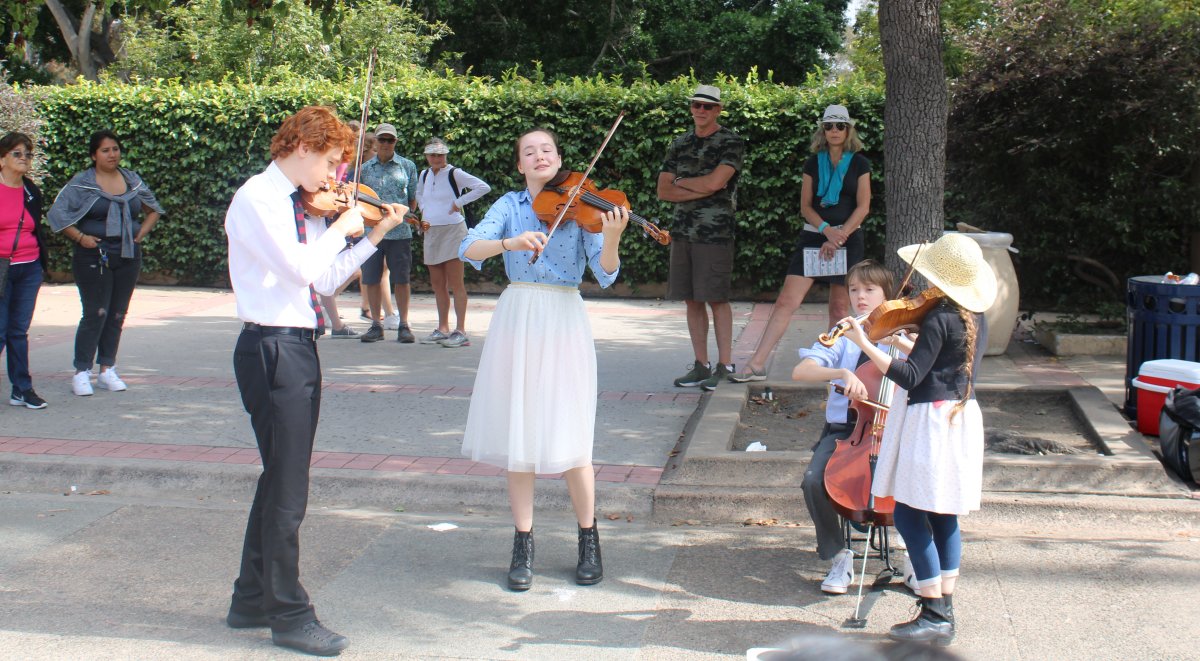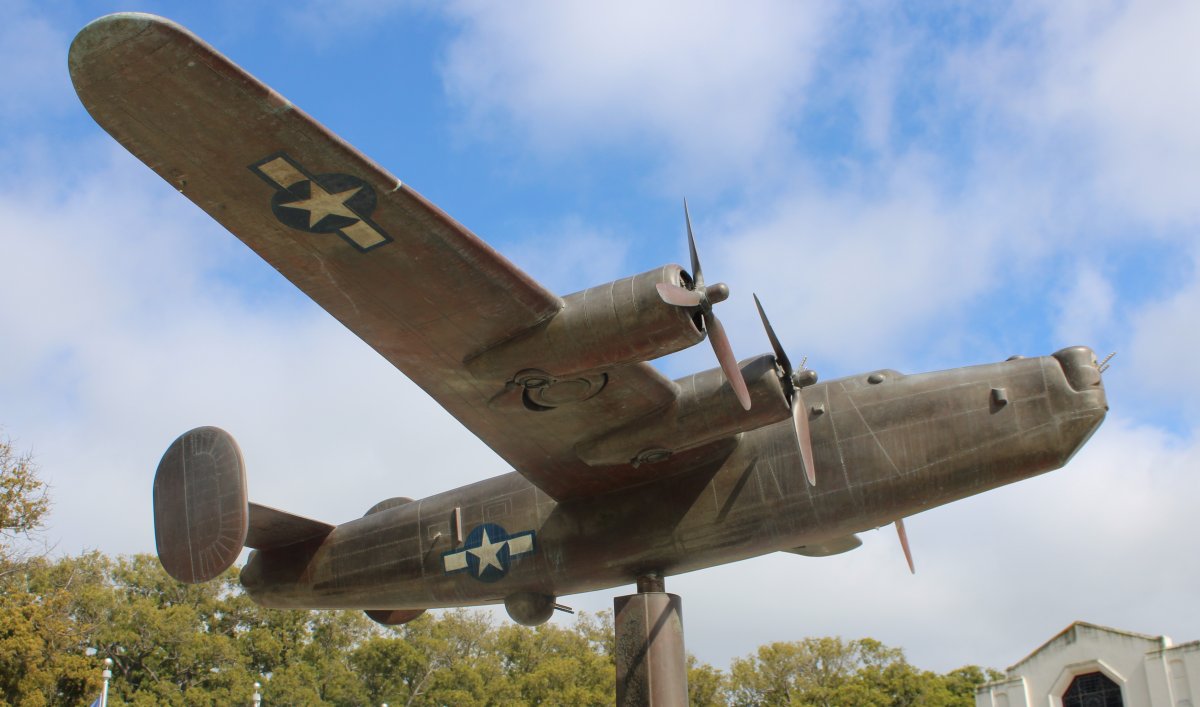July 7, 2019 - Flight West - Day Twelve
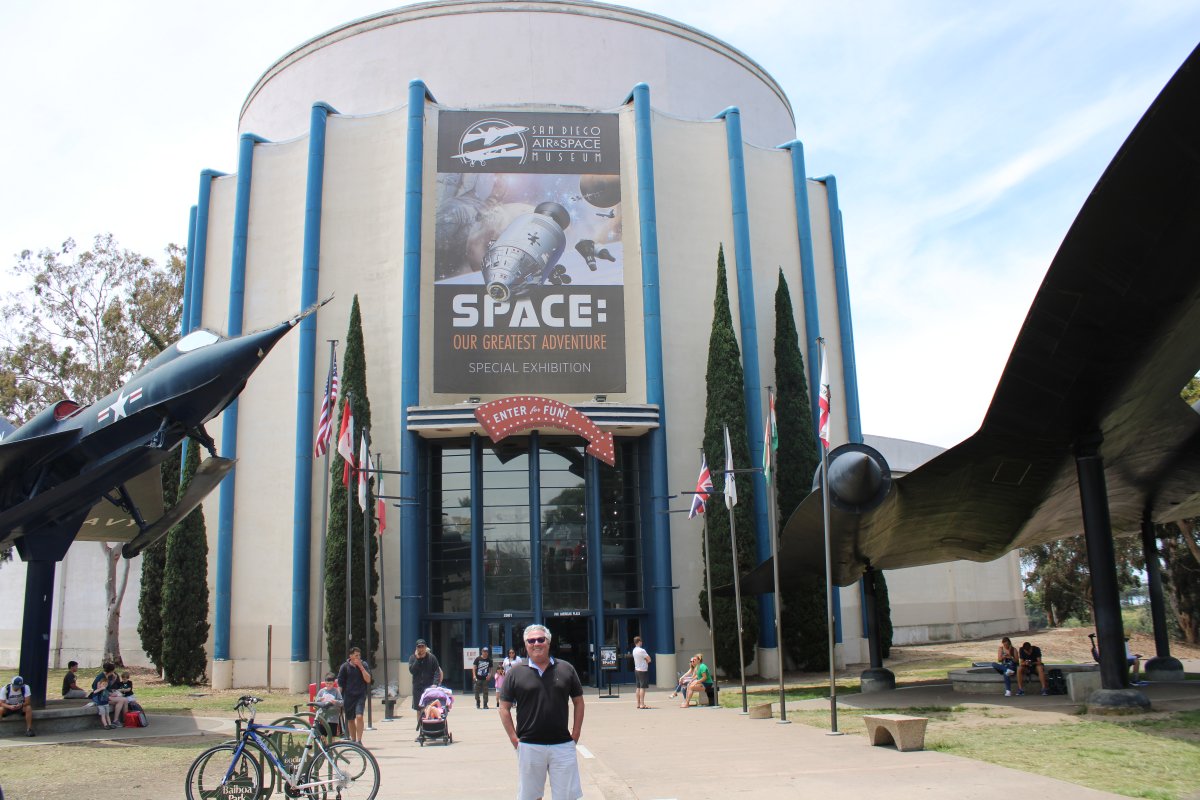
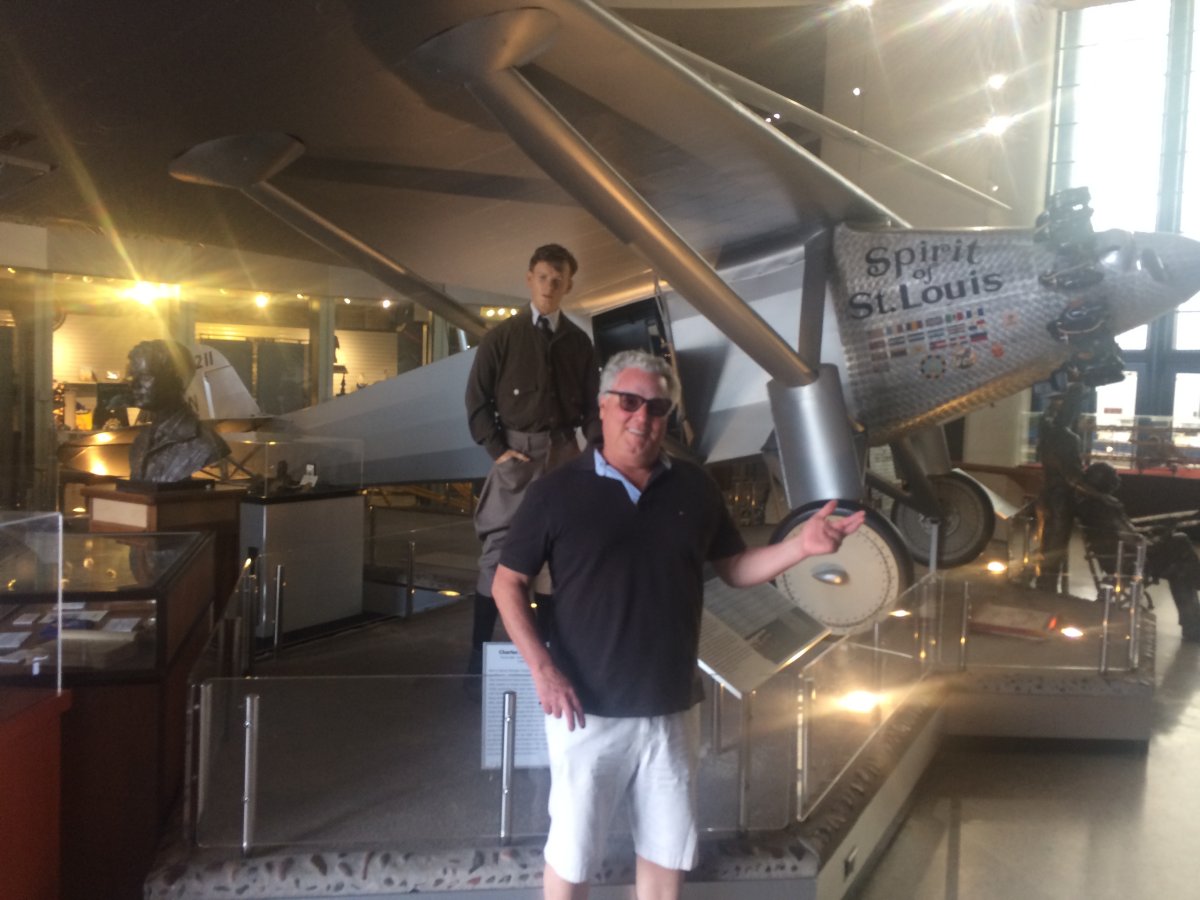
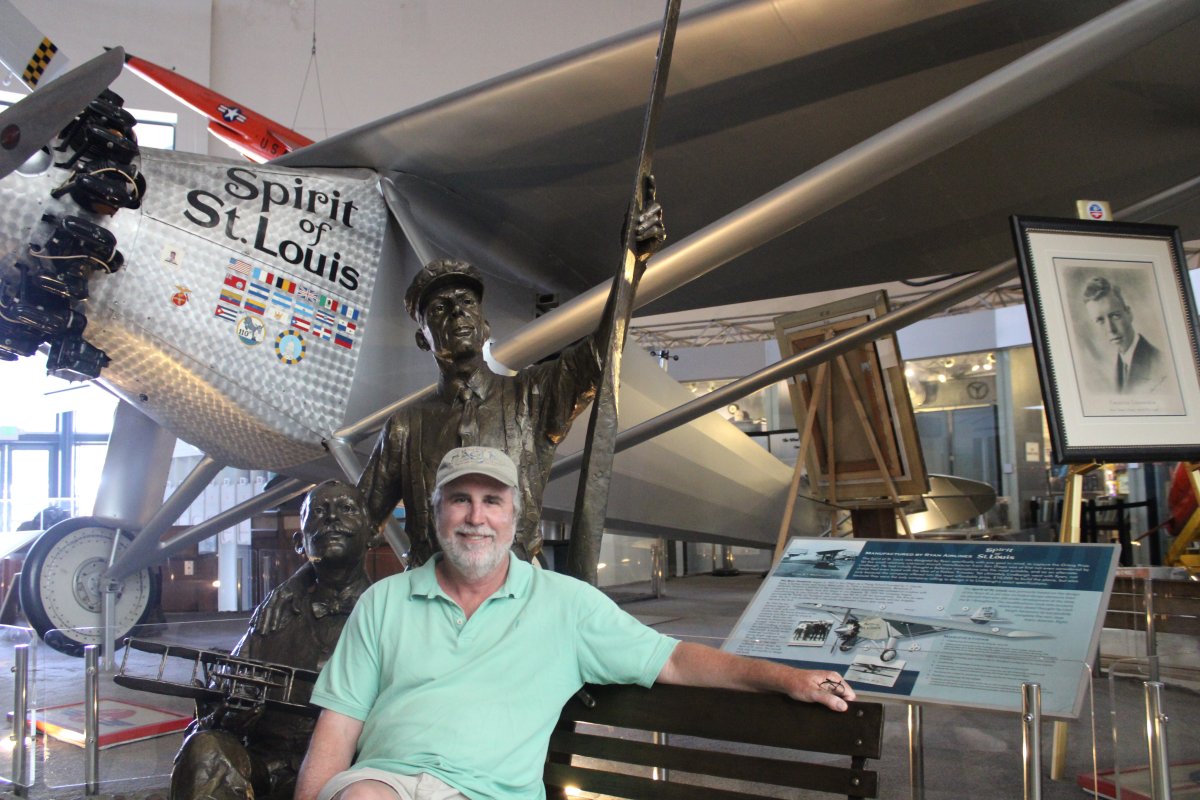
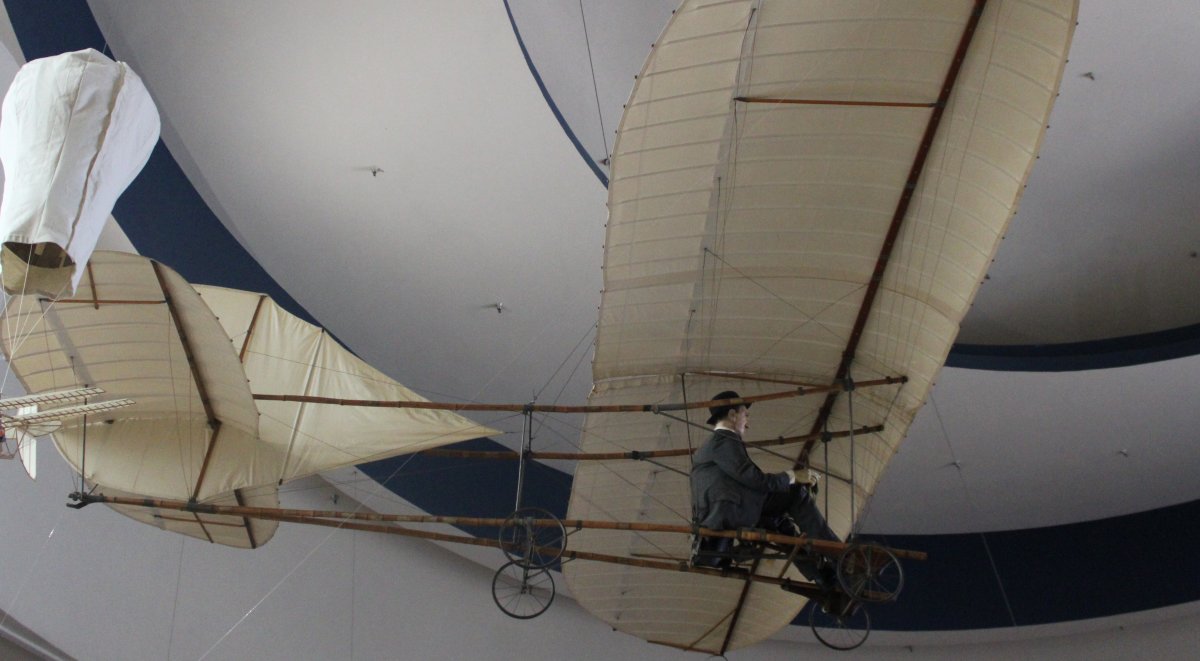
In the main lobby, we started talking to a docent, and he invited us downstairs into the museum's workshop. I would come to realize that the San Diego Air & Space Museum not only restores aircraft but builds them. If they don't have what they want, they build it. I've never seen a museum restore and build so much of their own collection (other than the National Air & Space Museum).
Here the docent is showing us their current project: the famous Hughes H-1 Racer. In 1935, Howard Hughes broke the world landplane speed record with this airplane. The original one of a kind aircraft now resides in the National Air & Space Museum on the Capital Mall.
Back in 2003, Jim Wright spent over 7,000 hours building an exact reproduction and flew it to AirVenture. I saw it there: Link. It was the star of AirVenture that year. Wright's replica was so close to the original that the FAA granted it serial number 2 of the model. His achievement in recreating the aircraft was heralded in virtually every well-known aviation magazine of the time. Tragically, the H-1 Racer crashed due to a prop malfunction in Yellowstone National Park on the way home, killing Wright and destroying the plane. Link
Here the docent is telling us about the replica construction. This is a look at the wings, which are all wood.
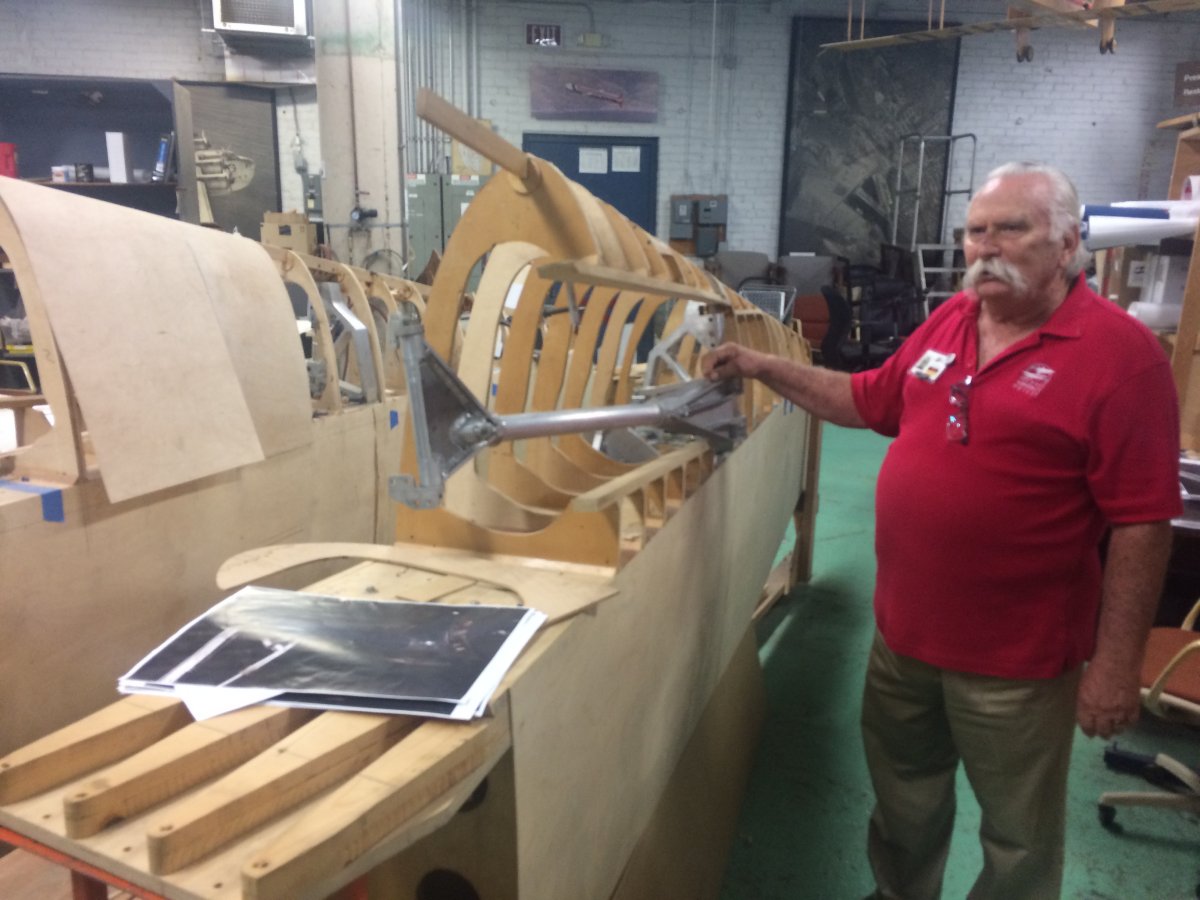
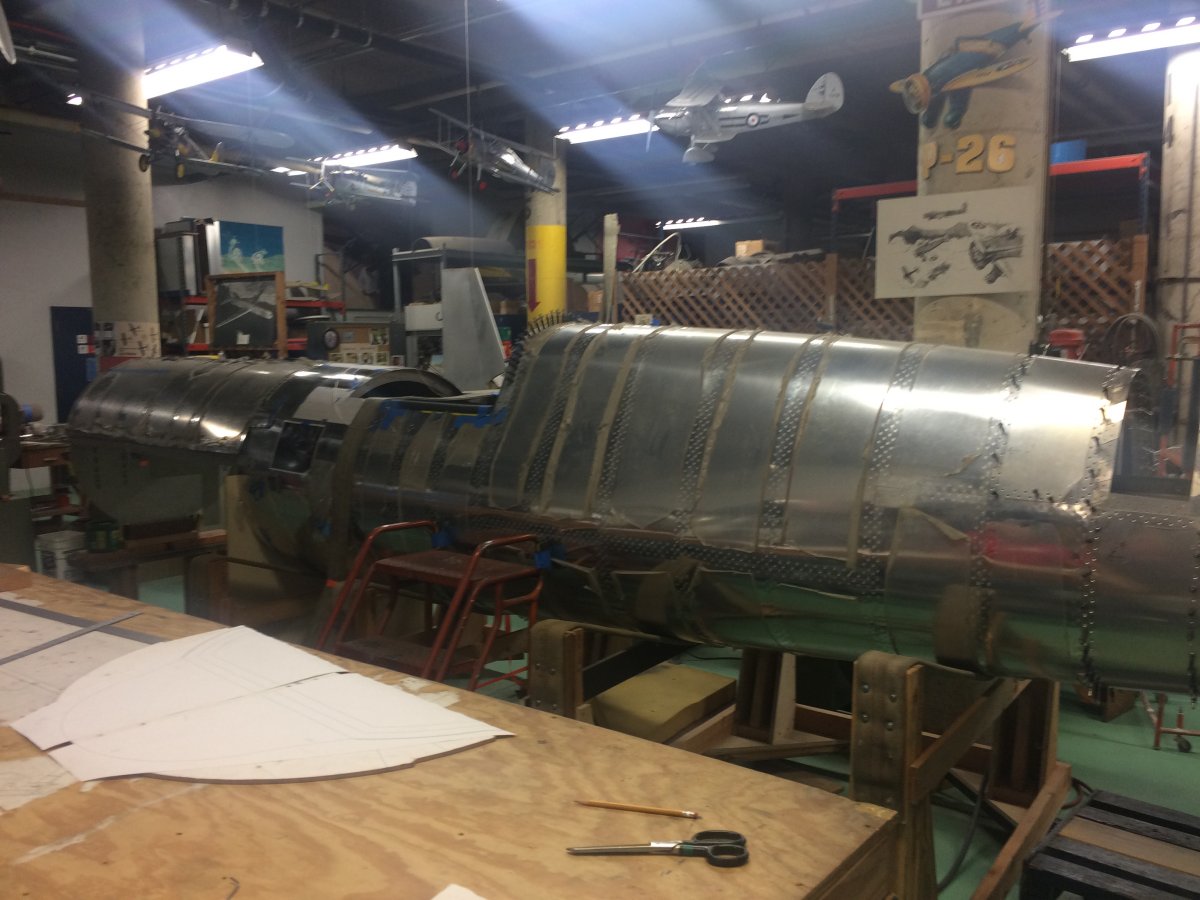
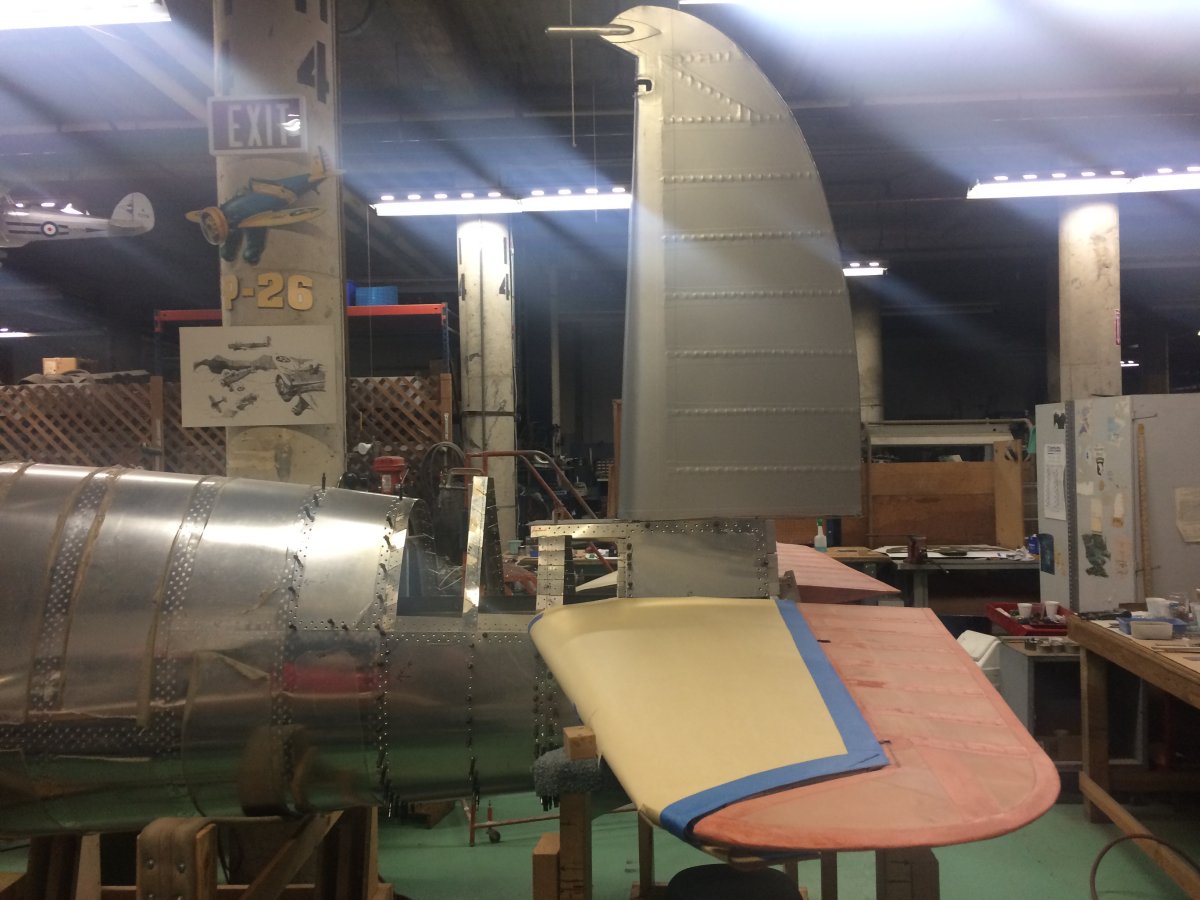
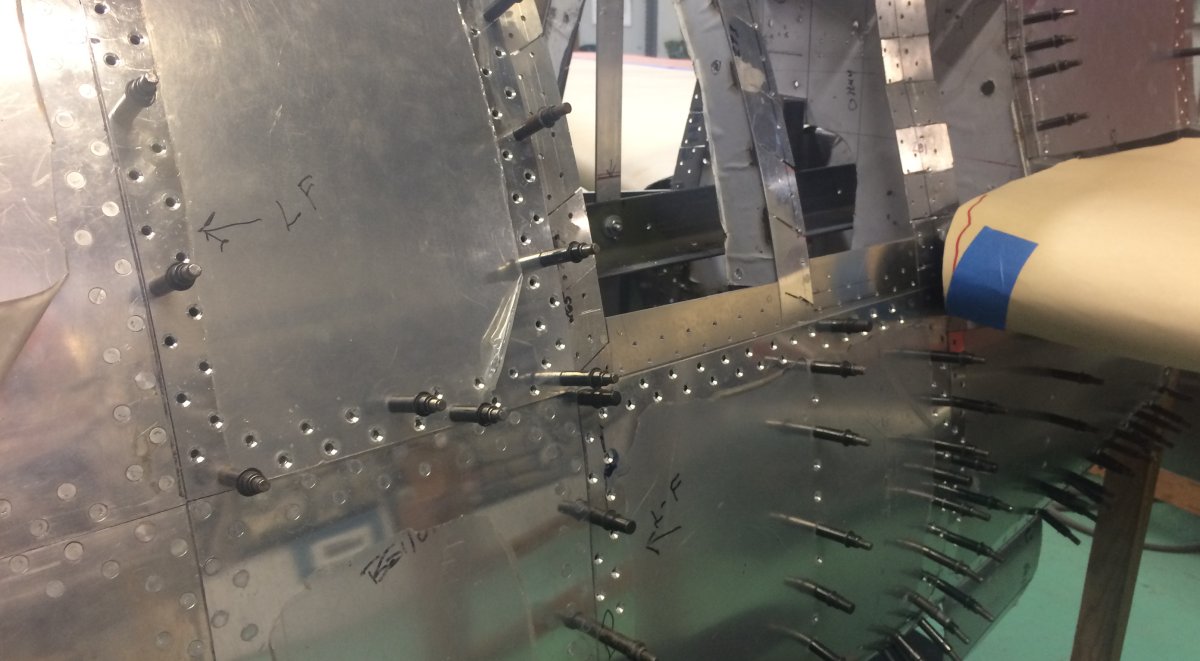
Looking inside the fuse. The bulkhead flanges are substantial with two rows of rivets.
The H-1 wings had wood spars and ribs. The docent said the person who had been working on them had moved away. I told him I wished I lived close by; I'd finish them up for him. Much of the building and restoration work is done by volunteers.
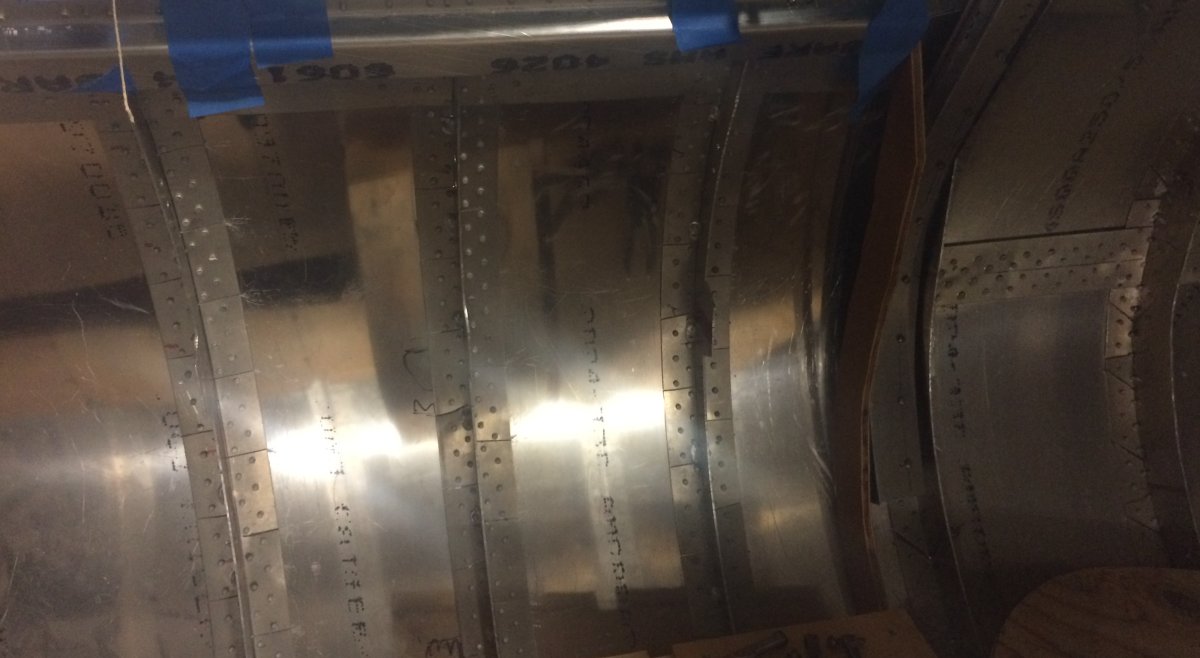
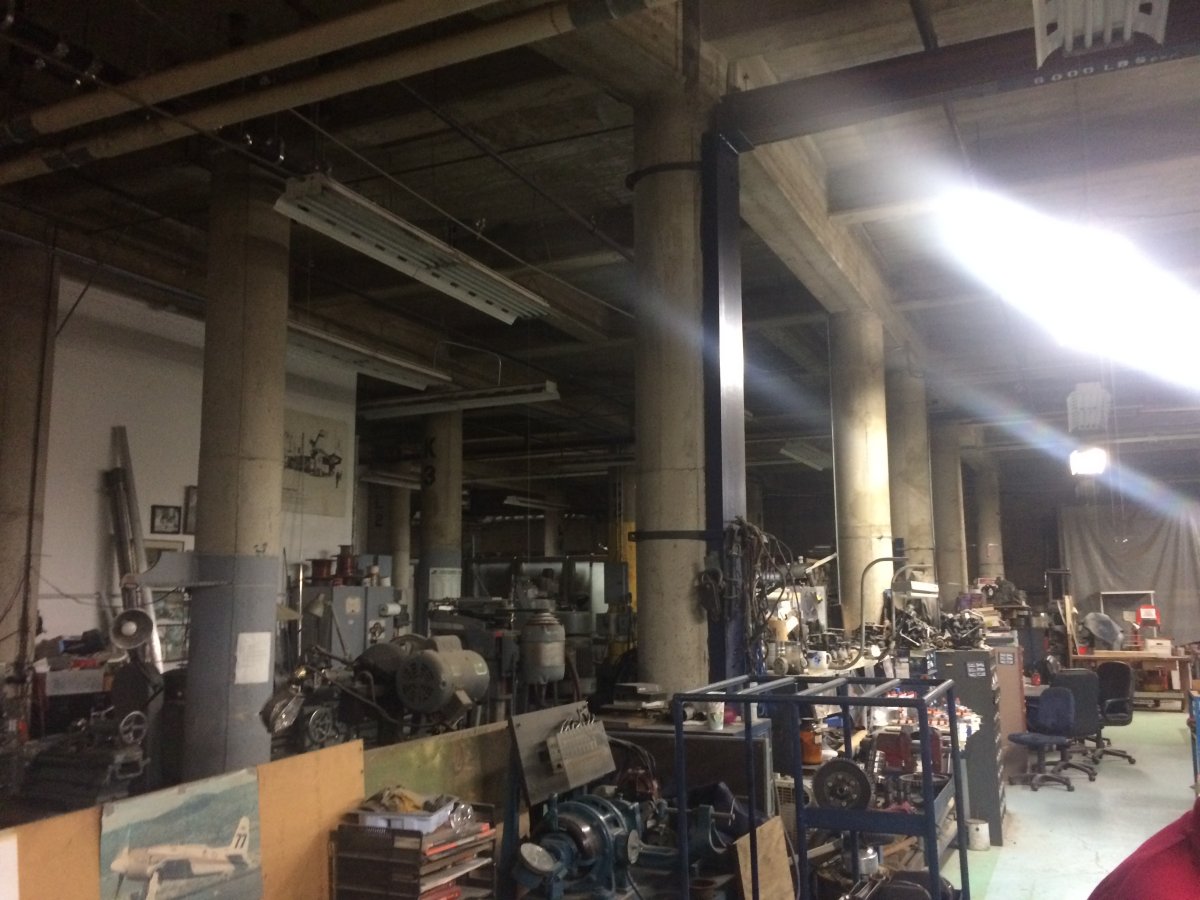
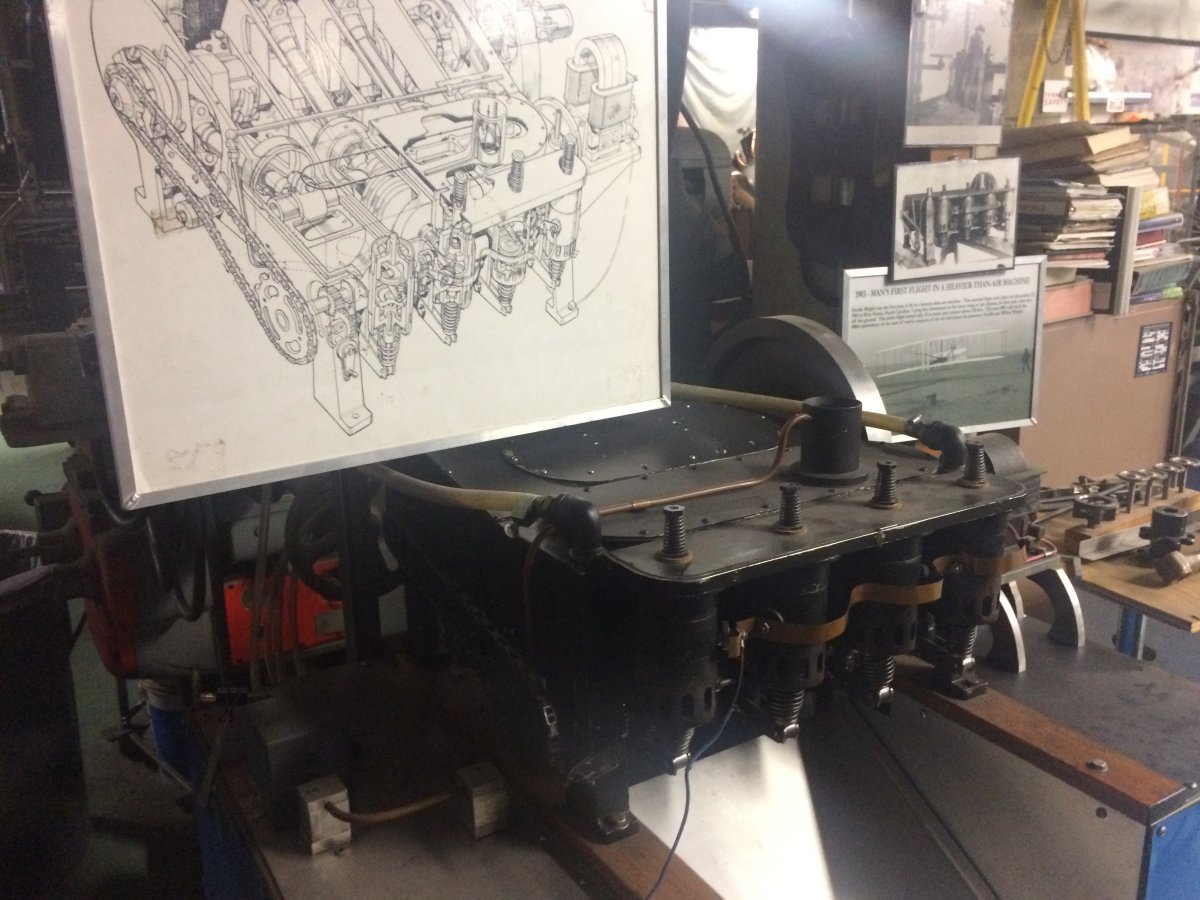
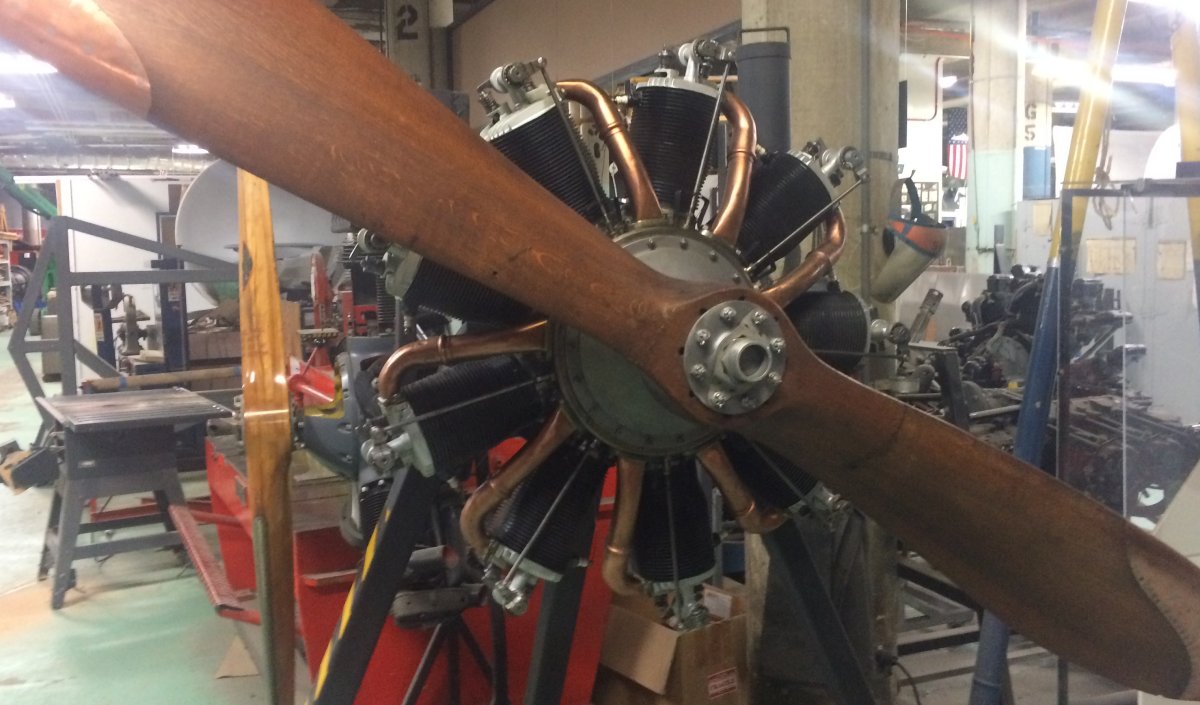
A titanium tailfeather from an SR-71 Blackbird with one of the engines to the left.
I really enjoyed touring the museum workshop. It was incredibly cool of the docent to take us down there.
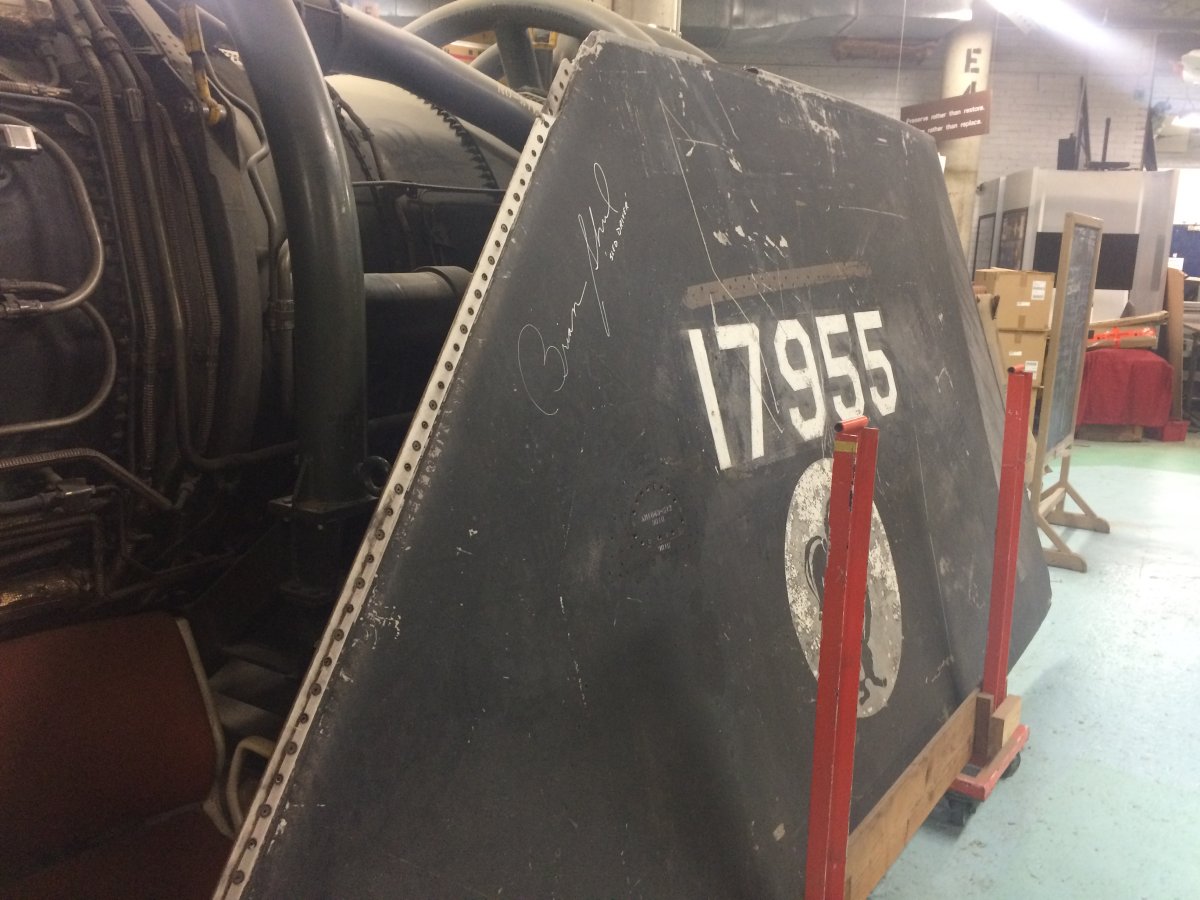
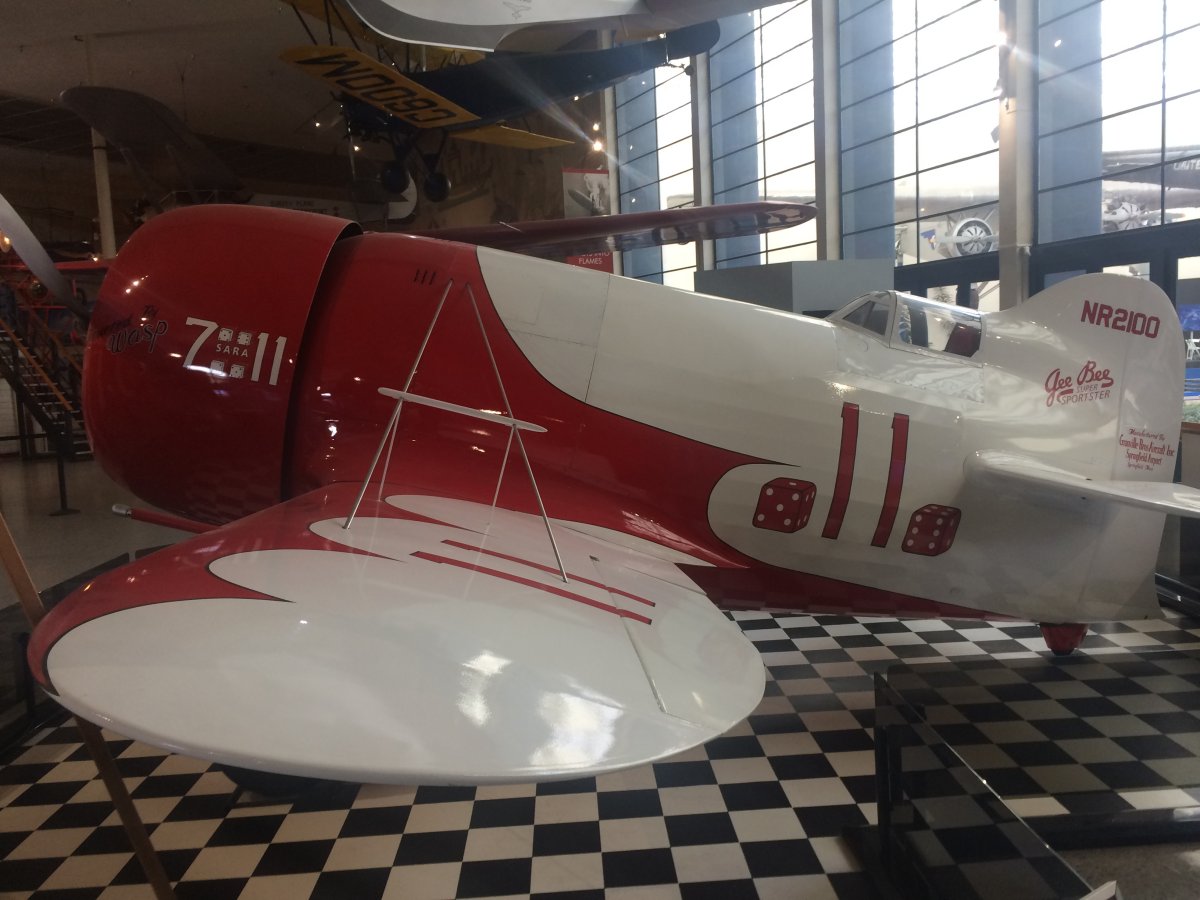
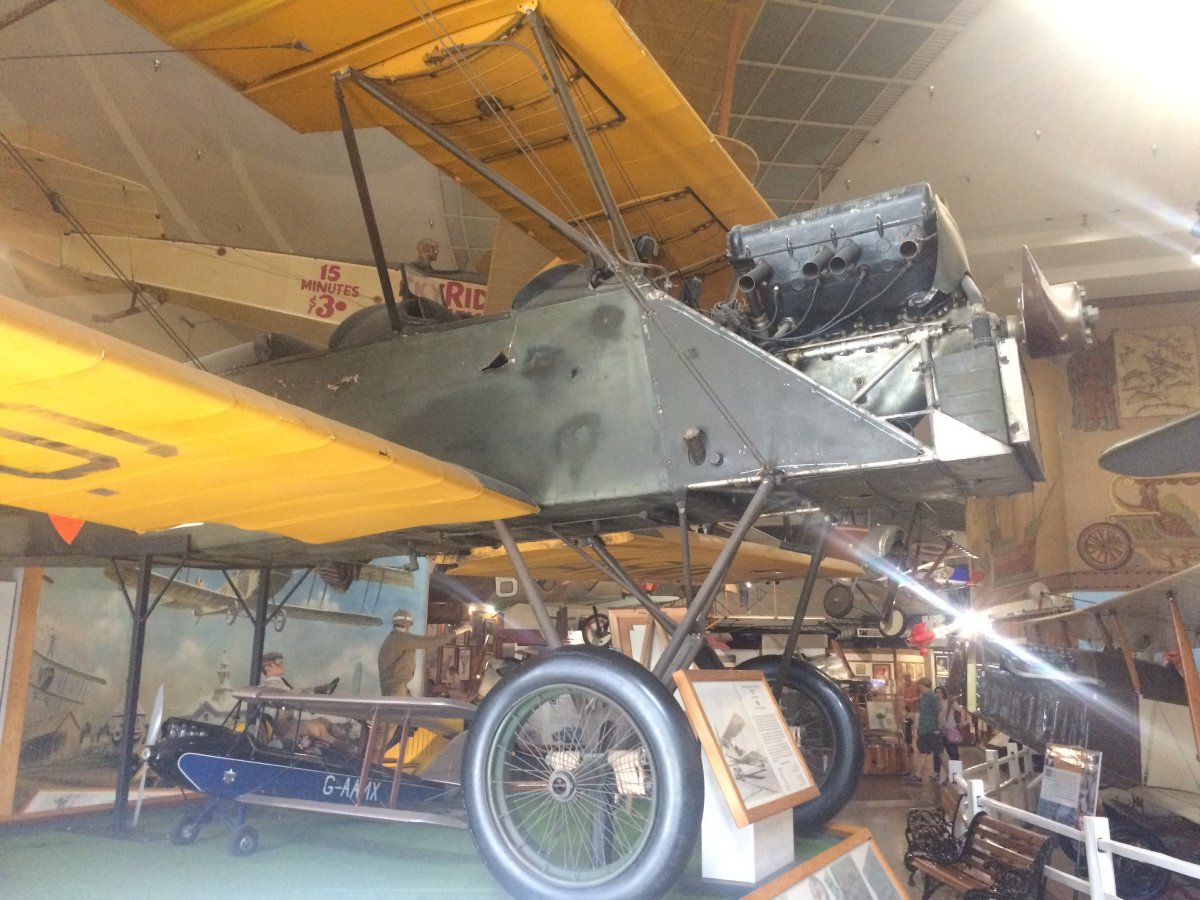
My second Triplane sighting on this trip! This Triplane has a rare 120 hp version of the 110 hp French Le Rhône Rotary engine. The triplane is finished in the markings of one of the Red Baron’s aircraft, Dr. I 477/18, and is certified to fly.
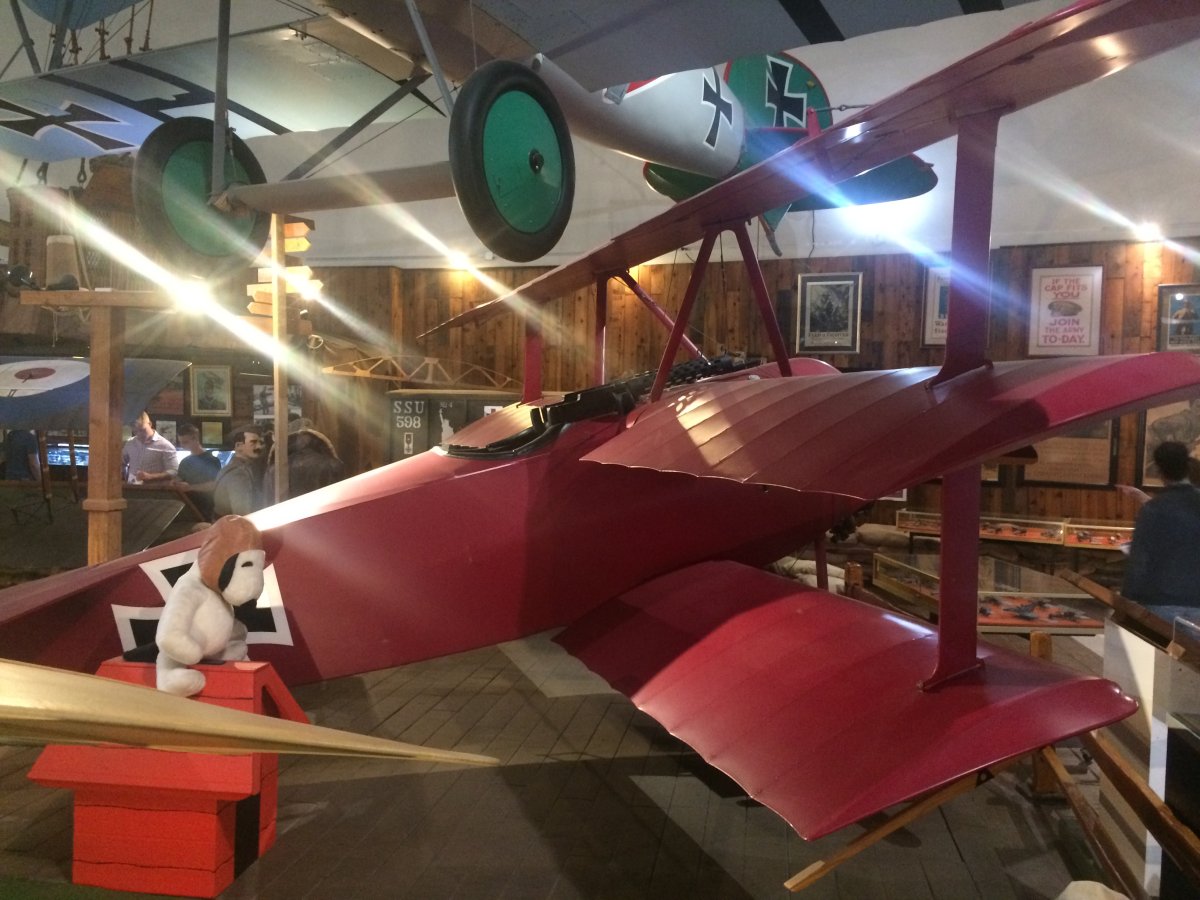
At bottom is a Fokker E-III Eindecker. The Museum’s first E-III was lost in the 1978 fire. Volunteer craftsmen started the task of replacing the Eindecker in October 1992, with the objective of building a flyable reproduction E-III that was as close to the original plane as possible. After five years of dedicated work by many Museum volunteers led by Bob Greenaway, the project was completed and presented to the public on August 26, 1997.
Hanging on the left is a French Nieuport 11 which was flown by some of France’s greatest aces: Guynemer, de Rose and Nungesser; and became famous as one of the aircraft that ended the ‘Fokker Scourge’ in 1916. The Museum’s Nieuport 11 is a reproduction built by Walter Addems and Joseph Pfiefer in Porterville, California in 1962. It was owned by Walter Addems for 20 years, during which time he flew his Nieuport for more than 600 hours before generously donating the plane to the Museum in November 1982. The aircraft is painted with the personal marking of a stylized RL for Raoul Lufbery, who was the first American ace in World War I while flying with the Lafayette Escadrille.
Hanging in back center, the French-built Nieuport 28C-1 was never used by the French because they preferred the SPAD; however, they sold the aircraft to the Americans who had no fighter airplanes of their own. In March 1918, the American Expeditionary Force (AEF) purchased 297 of these French-built fighters Captain Eddie Rickenbacker, perhaps the most famous of America’s airmen, scored 12 of his 26 victories in his Nieuport N28C-1. The Museum’s aircraft is in the markings of Ken Marr, commanding officer of the famous 94th “Hat-in-the-Ring” Squadron. The aircraft is an original restoration by George Hunt. Its early history is unknown, but it is known that the plane was one of three owned by stunt pilots Paul Mantz and Frank Tallman, which were used in motion picture work during the 1930s, including the classic WWI flying film “The Dawn Patrol.” It was purchased by the Museum in 1979.
On the upper right is an Albatros D Va. The Albatros fighter series consisting of D. I through D. Va were the primary German fighter aircraft of World War I.
The Museum’s Albatros -- on the right -- was built by Jim and Zona Appleby of Antique Aero, Ltd. in Riverside, California. The aircraft is in the markings of Joachim von Hippel of Jasta 5, the third-highest scoring German Jasta (squadron). It illustrates well the flamboyant and famous german “Flying Circus” coloring system. The green, red-outlined tail, green wheel covers, and red propeller spinner were the markings used on all aircraft in the squadron. These colors were well-known to the British, who called them “The Green Tails.” The gray fuselage with the red lightning bolt was von Hippel’s personal marking which distinguished his fighter from other aircraft. He named his aircraft “Blitz” (Lightning). There are only two original Albatros in existence, one in the Australian War Museum, the other in the Smithsonian. The Museum’s aircraft is powered by a rare 1917 212 hp Hall-Scott L-6 engine, which was based on the original 160-180 hp Mercedes.
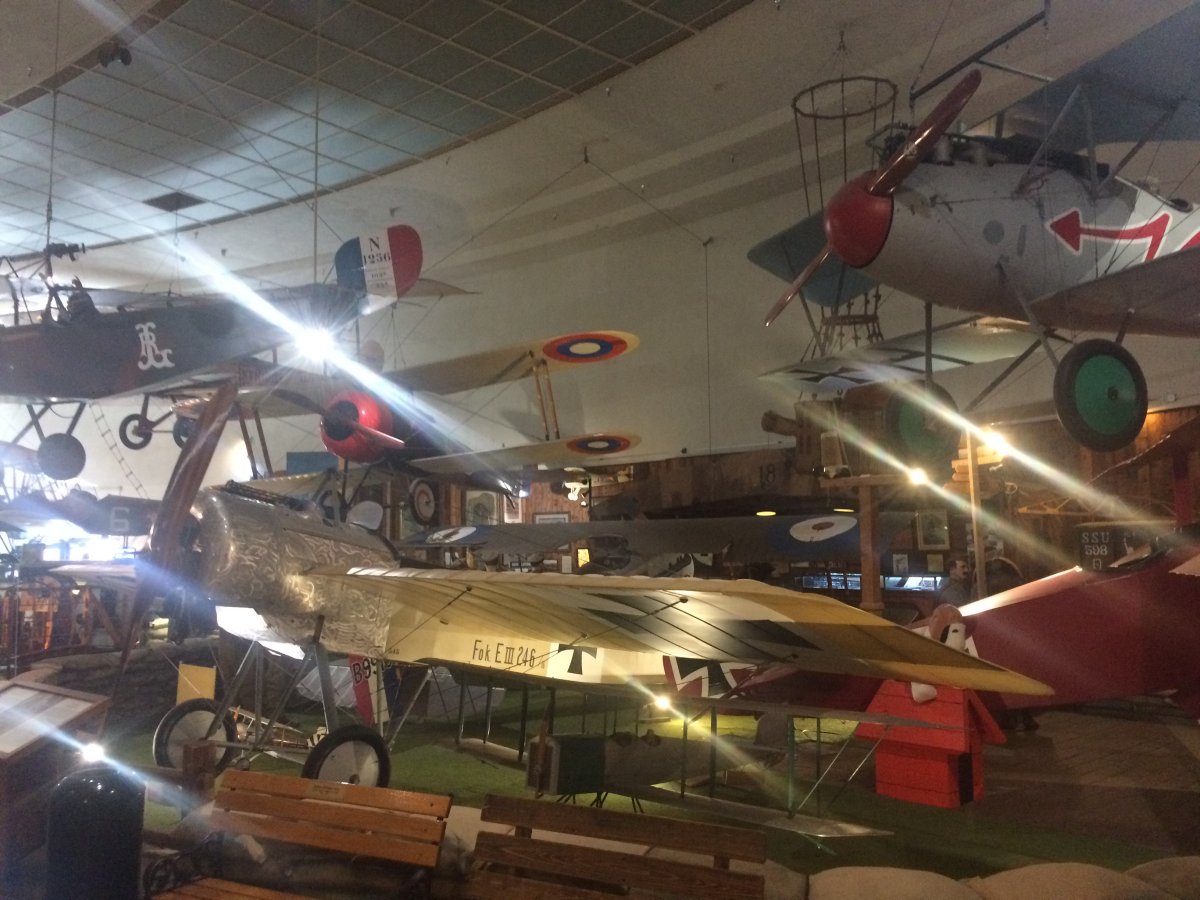
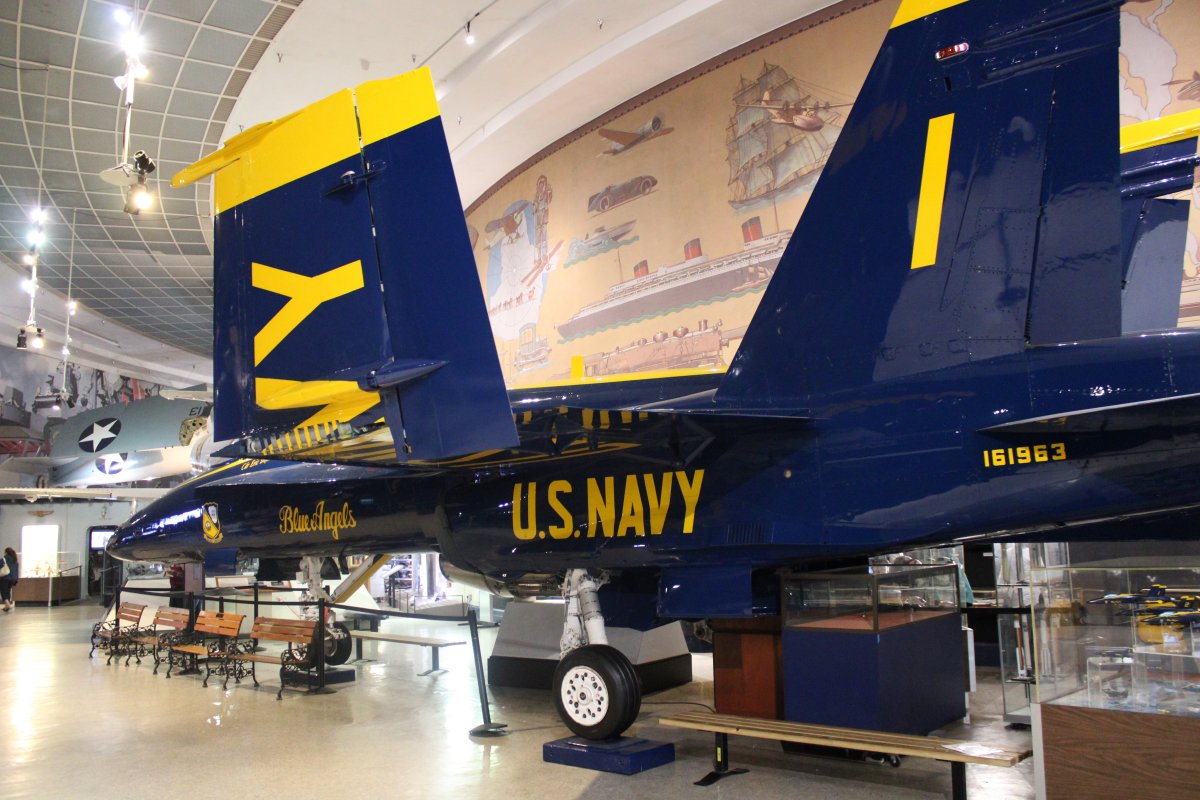
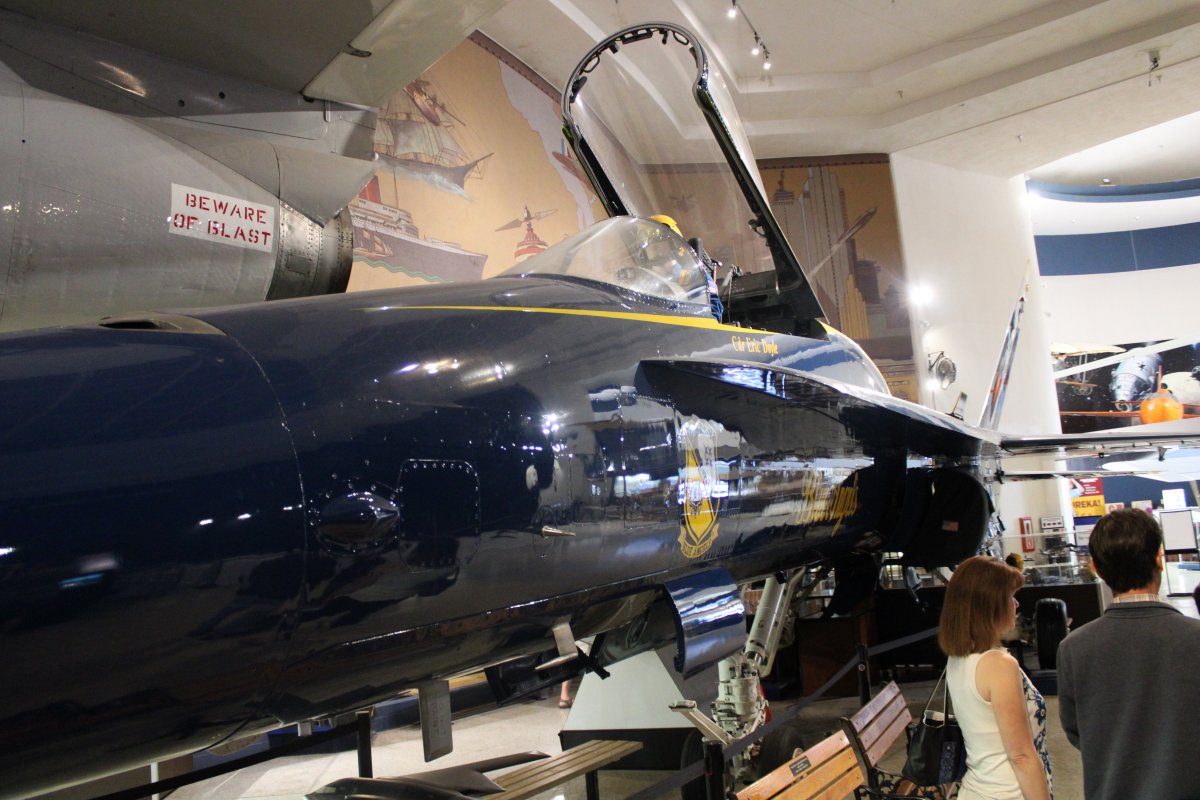
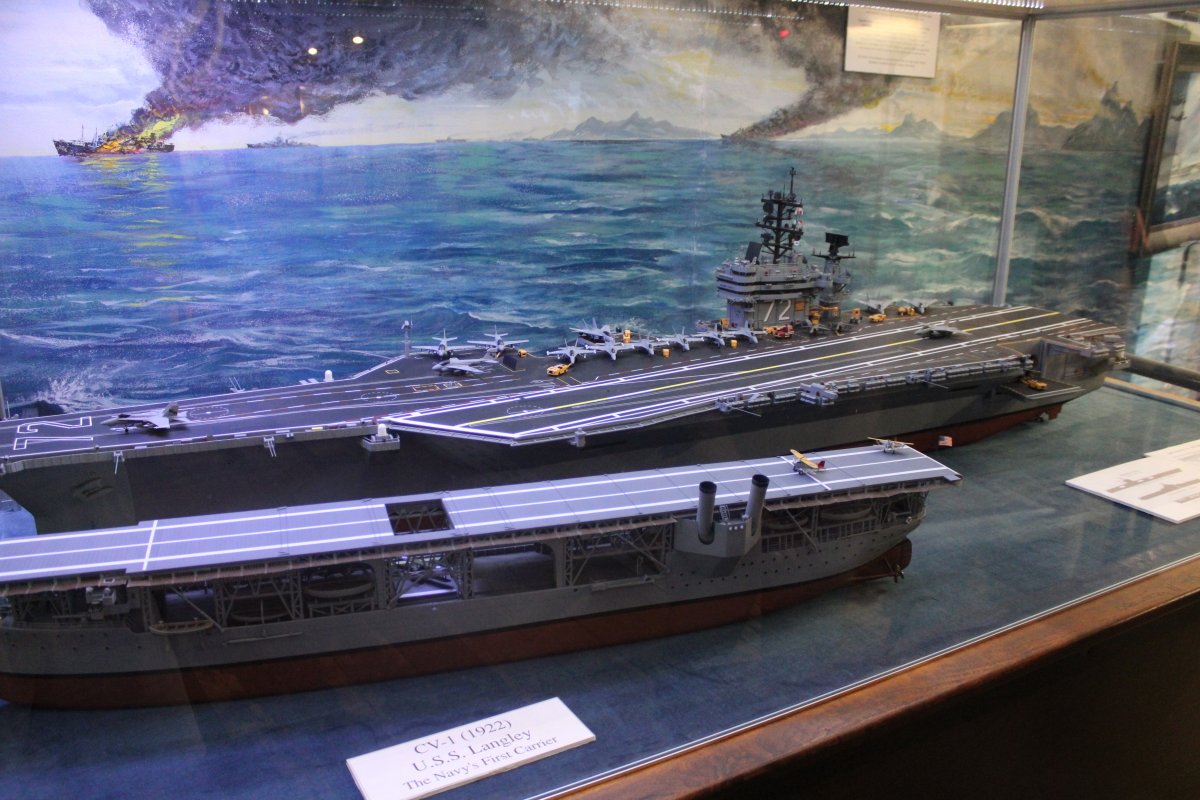
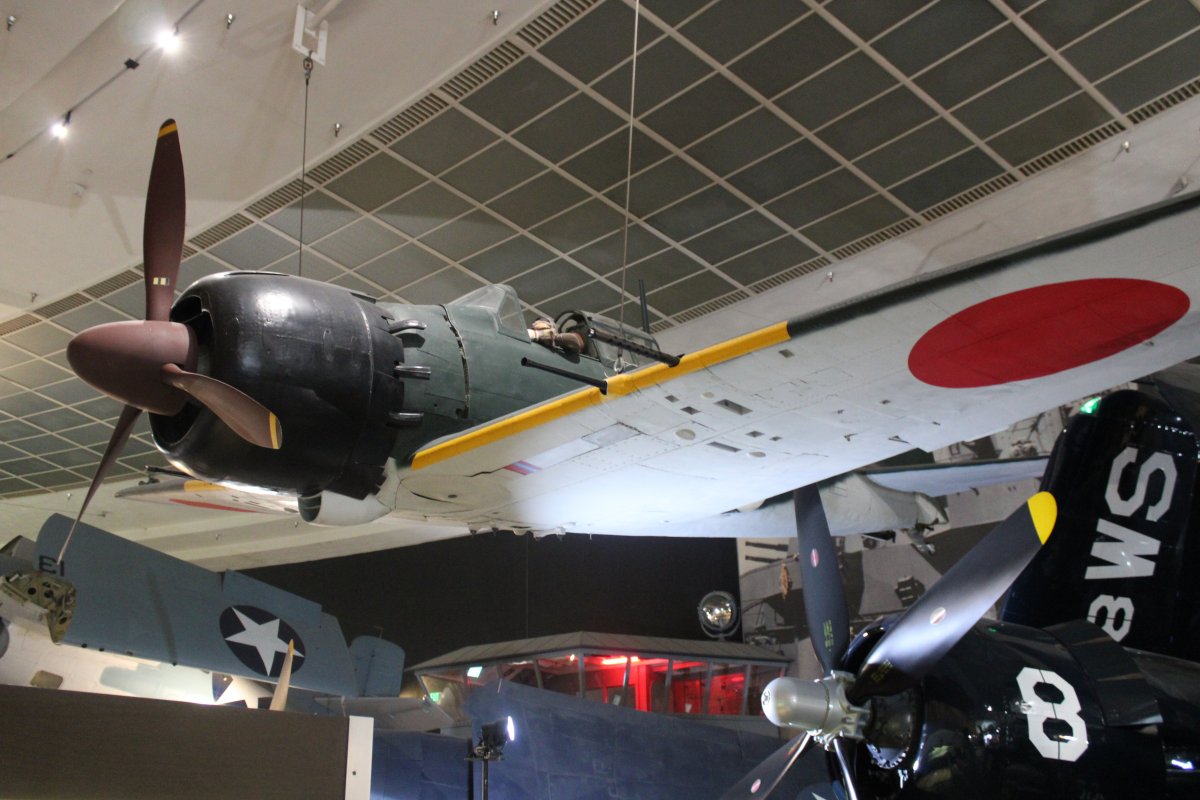
A Spitfire Mark Sixteen. The Mk XVI was the same as the Mk IX in nearly all respects except for the engine, a Merlin 266. The Merlin 266 was the Merlin 66 built under licence in the USA by the Packard Motor Company. In the early months of 1942, with the clear superiority of the Focke-Wulf Fw 190 over the Spitfire VB, there was much pressure to get Spitfires into production using the new two-stage supercharged Merlin 61 engine. The Mk IX still proved to be an effective counter to the Focke-Wulf Fw 190.
The acquisition of the Museum’s Spitfire in April 1989, was due principally to the efforts of the Eagle Squadrons Association – those American pilots who flew for England before America entered WWII – and it is displayed in their honor.
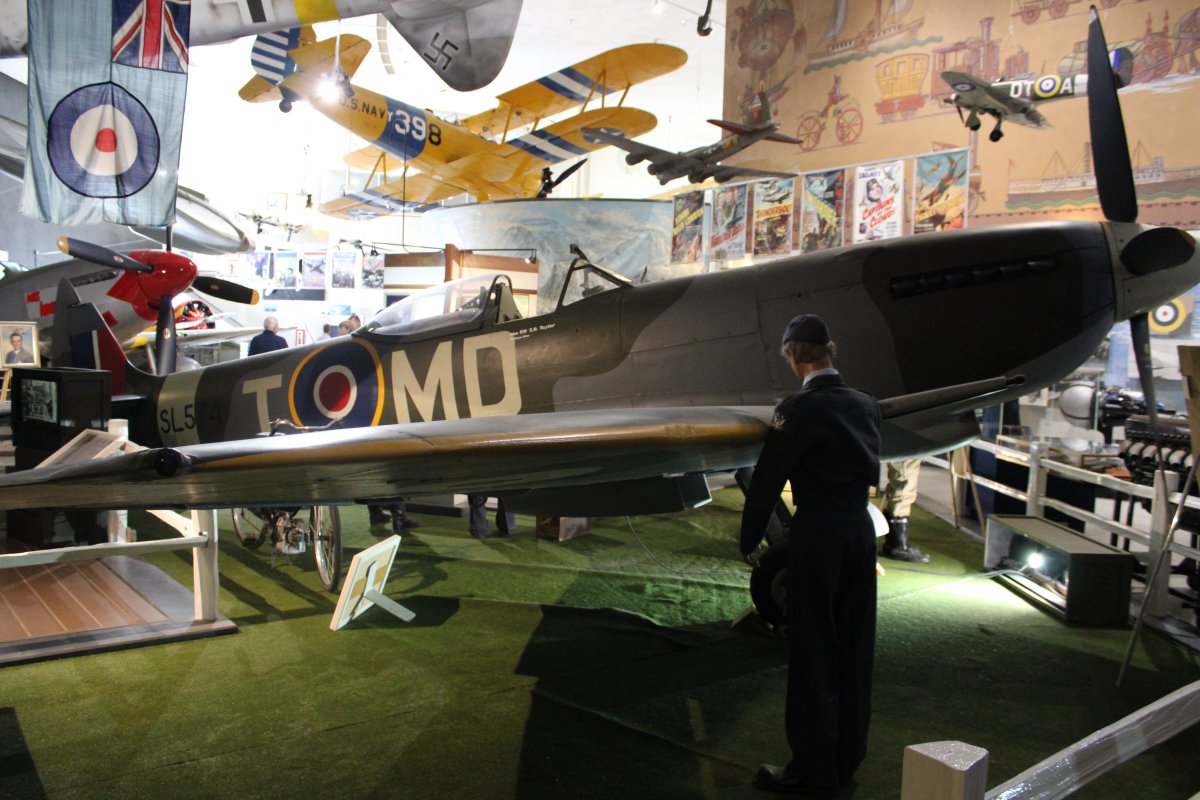
Overhead and inverted, the Museum’s Bf 109G-14 is a full-scale wood model constructed by George N. Lucas of Rochester, New York, completed in August 1978. The San Diego Air & Space Museum acquired it in 1983. What I liked about this 109 was was that it carries the markings of the aircraft flown by Luftwaffe ace Erich Hartmann. In particular the black tulip on the engine cowling. Hartmann is the most successful fighter ace in the history of aerial warfare with an incredible 352 aerial victories. Most of these were on the Eastern Front against the Soviets, but Hartmann did fight against P-51 Mustangs over Romania and shot some down. After the war, he spent ten years in various Soviet prison camps and gulags, then served in the West German Air Force. He died in 1993 at age 71.
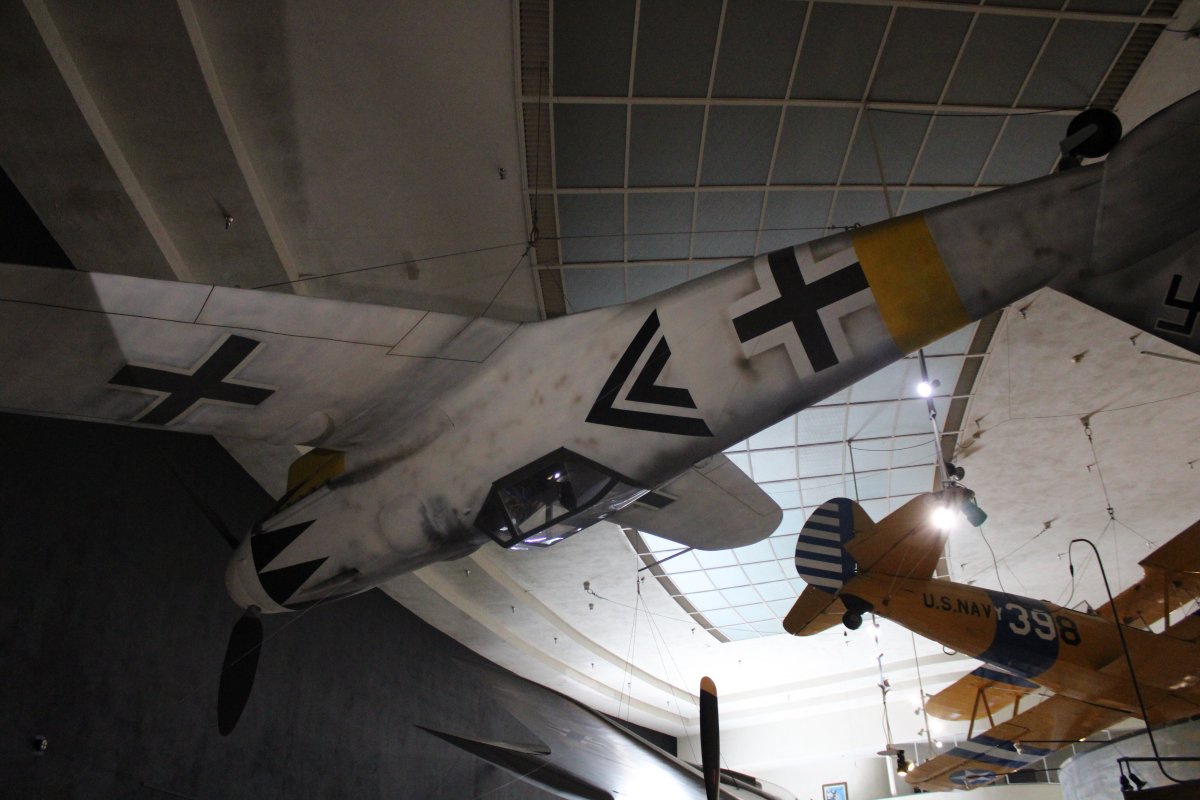
In the center Pavilion of Flight, an F-4 Phantom II is in eternal pursuit of a Mig-17.
This Phantom has a significant historical background. It was assigned to Fighter Squadron 96 “Fighting Falcons” aboard the San Diego based USS Constellation, where it was used for combat sorties during the Vietnam War. In early 1972, pilot Lt. Randy “Duke” Cunningham and radar intercept officer Willie Driscoll became the Navy’s first aces of the Vietnam War by scoring two Mig kills in this aircraft, and three more Mig kills in a similar F-4 from the Fighting Falcons squadron.
I saw Cunningham speak when I was a Midshipman at the Naval Academy. I remember someone asked him what was the best fighter plane the world. He said "whatever plane I am flying." The Midshipmen roared.
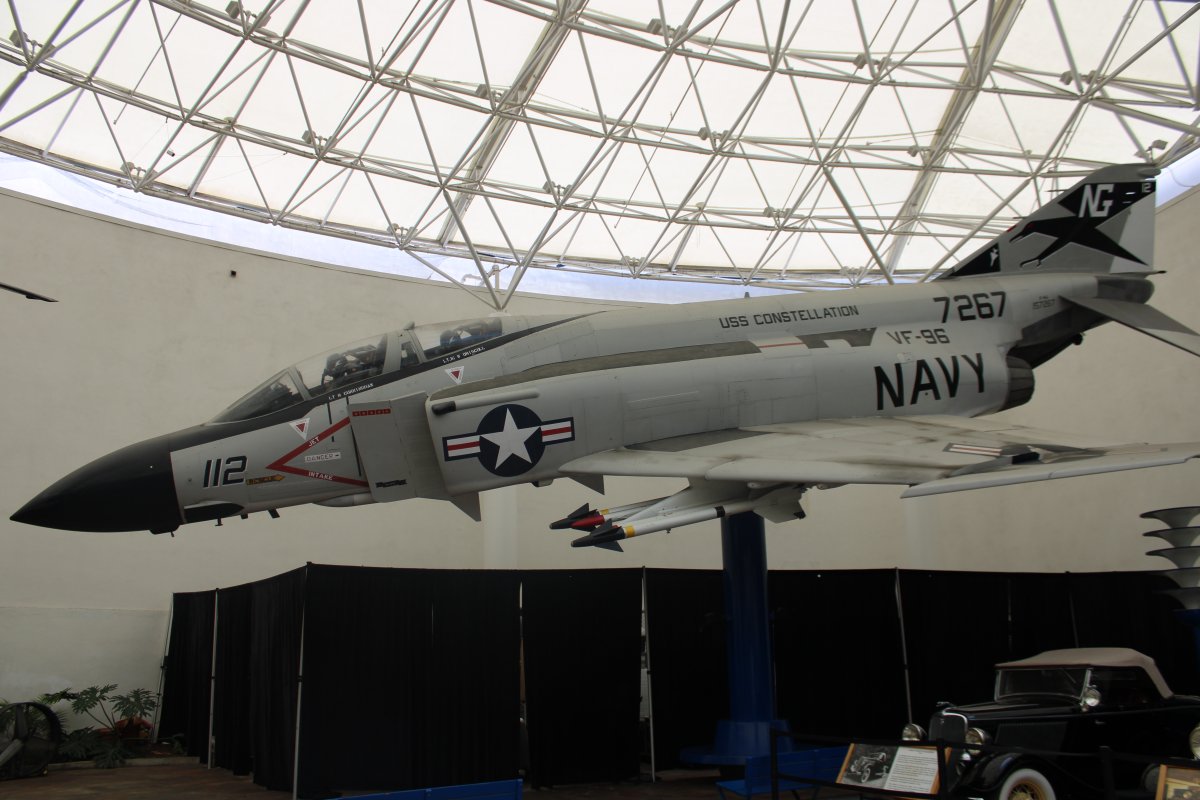
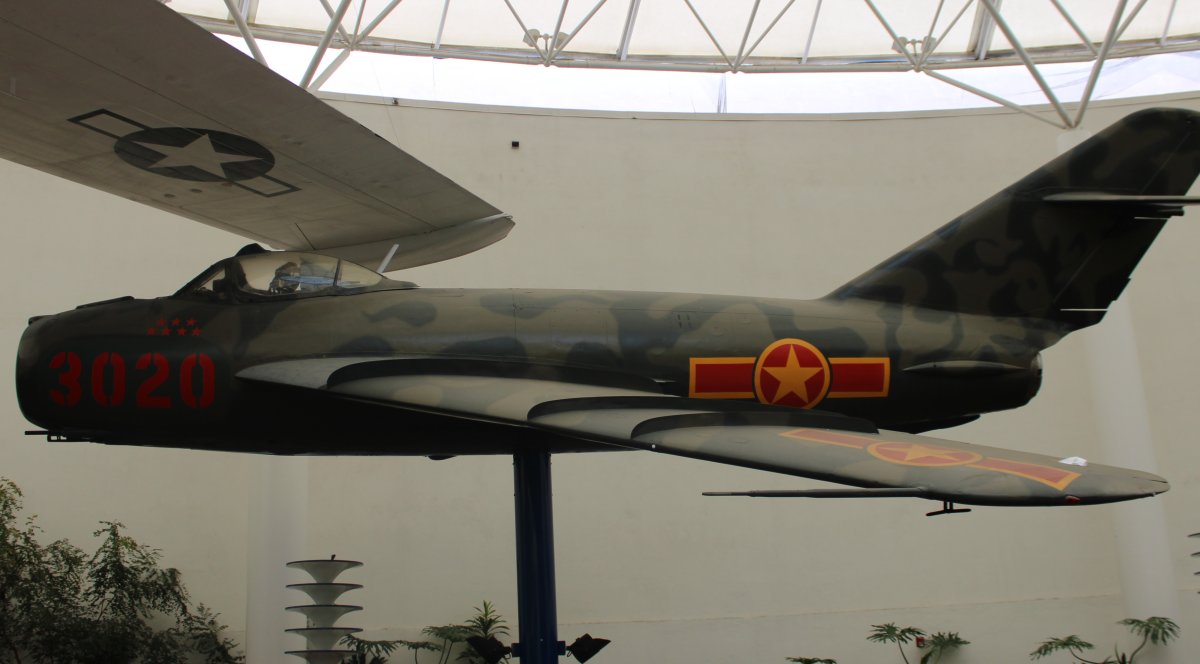
The Ford Trimotor, or “Tin Goose,” as it was affectionately nicknamed, had a profound effect on the early advancement of commercial aviation. In the 1920s commercial aviation in the United States was in its infancy, and still considered quite dangerous. Yet the Ford Trimotor proved that flying was a fast, and most importantly, safe means of long distance transportation. Ford used his name, and an extensive publicity campaign focused on the safety of the Trimotor, to gain the trust of the public. In service the aircraft proved to be extremely reliable and easy to maintain. Moreover, it compiled one the best safety records in the industry.
The Museum’s Ford Trimotor has a very extensive provenance that illustrates well the great versatility and durability of the aircraft. It was the eleventh 5-AT to come out of Ford’s Dearborn Michigan plant, and was first purchased by Pan American Airlines in December of 1928 for their popular Miami to Cuba route. Later it flew air tours for Scenic Airlines over the Grand Canyon and the Las Vegas Strip until being blown from its tie-downs by a strong wind storm, ending up in a drainage ditch twisted and mangled, and seemingly damaged beyond repair. By that time the Trimotor had logged 24,043 hours of flight time.
The Trimotor 5-AT-11 was then donated by Scenic Airlines to the San Diego Air & Space Museum in August of 1983. It was stored at North Island Naval Air Station until late 1984, when it was moved to the basement of the Ford Building for a long and arduous restoration process. Under the leadership of Tim Cunningham, the restoration volunteers spent nearly 15 years, and tens of thousands of hours, painstakingly remanufacturing and crafting every detail of the plane to assure a historically accurate restoration, one that would represent the original Trimotor of 1928, when it was owned by Pan American Airlines.
I flew on one of these at AirVenture and loved it.
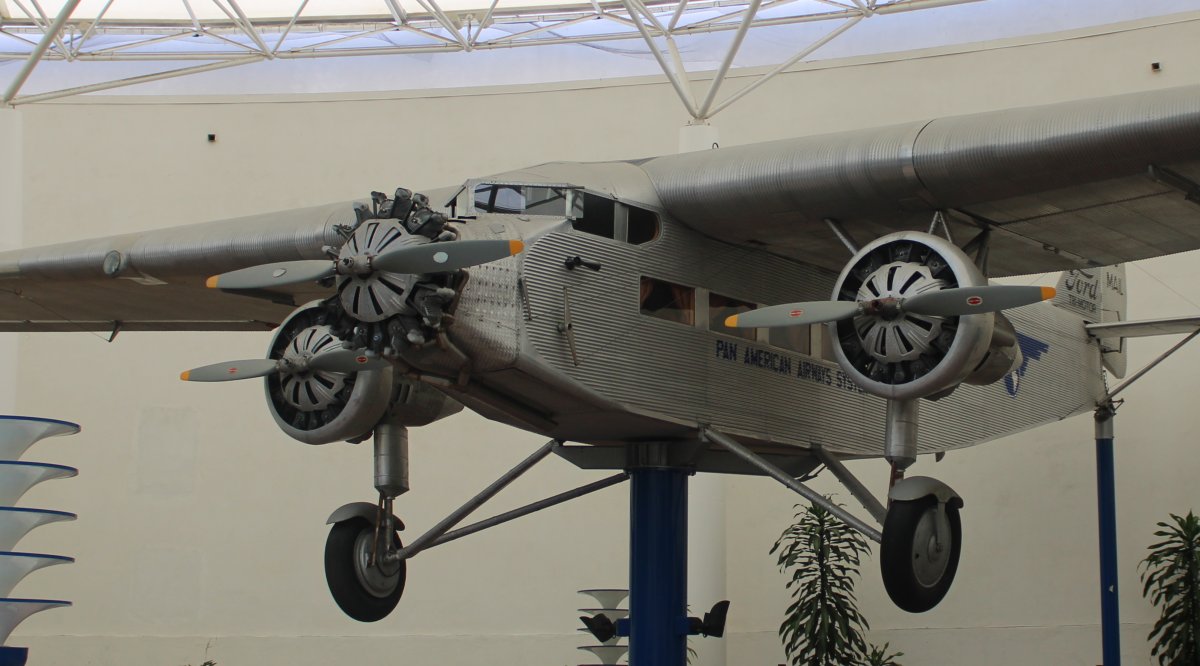
The Ryan ST family of aircraft (including the ST, STA, STB, STM, STK and STW) were some of the most popular and successful civilian sport airplanes in history. First introduced by the San Diego company in 1934, the original ST (sport trainer) design was a two seat, open cockpit monocoque fuselage aircraft fitted with a 95-hp Menasco B4 inverted inline engine. Only five were built before Ryan introduced its peppier successor, the STA. Fitted with either a 125-hp Menasco C4 or 134-hp Menasco D4 engine, the STA helped the ST line reach its true potential.
This Ryan STA was donated to the Museum by none other than T. Claude Ryan himself, the founder of Ryan Aeronautical Company. Mr. Ryan purchased the aircraft from Aaron Berkowitz of Arizona in April 1979, specifically for the Museum, to help rebuild its collection after the devastating fire in 1978. Ryan’s estate officially donated the aircraft to the Museum in December 1982 after his death.
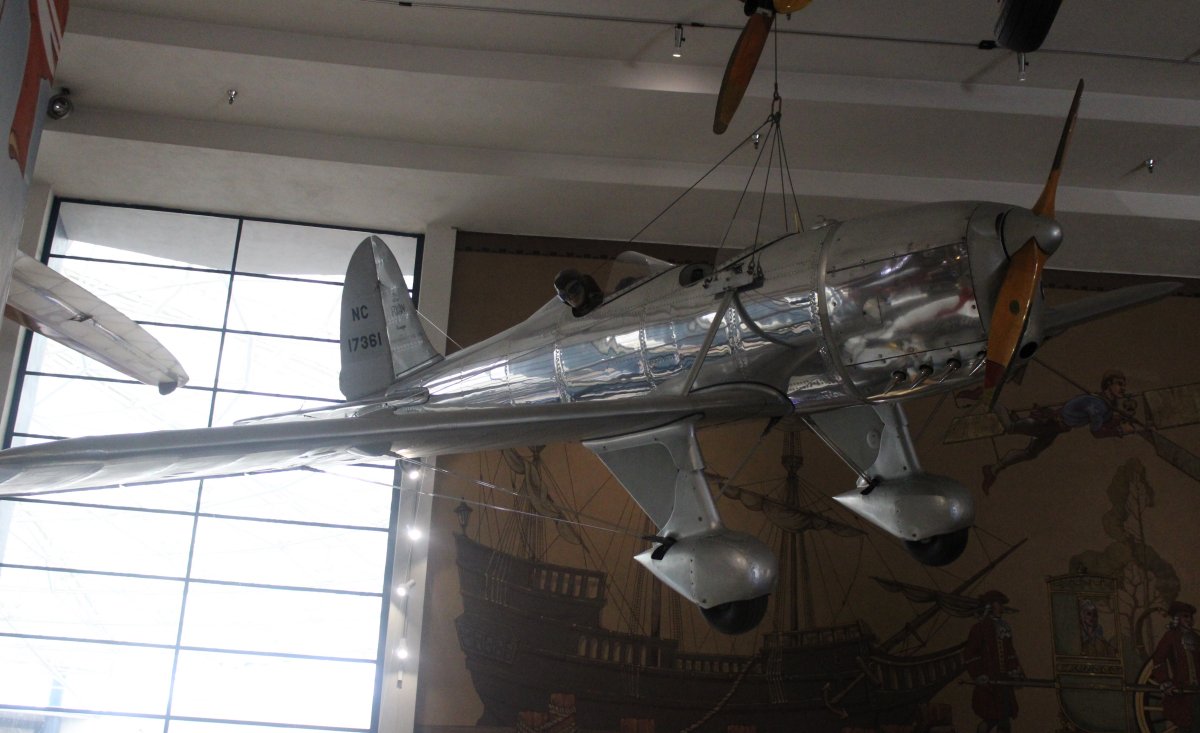
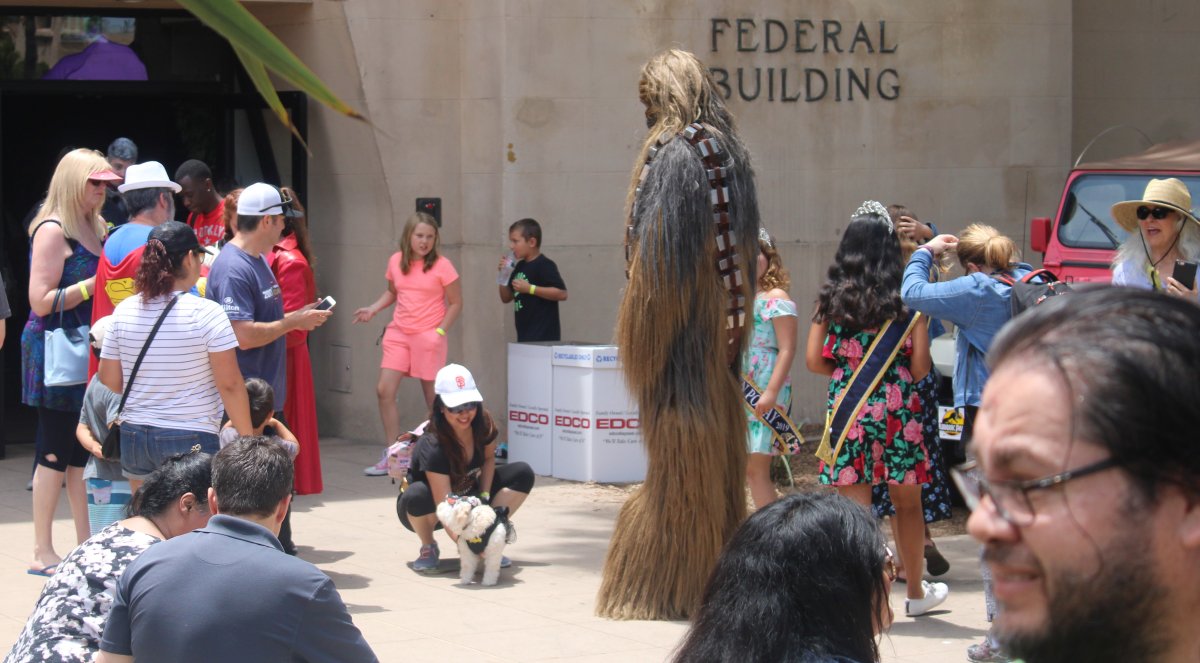
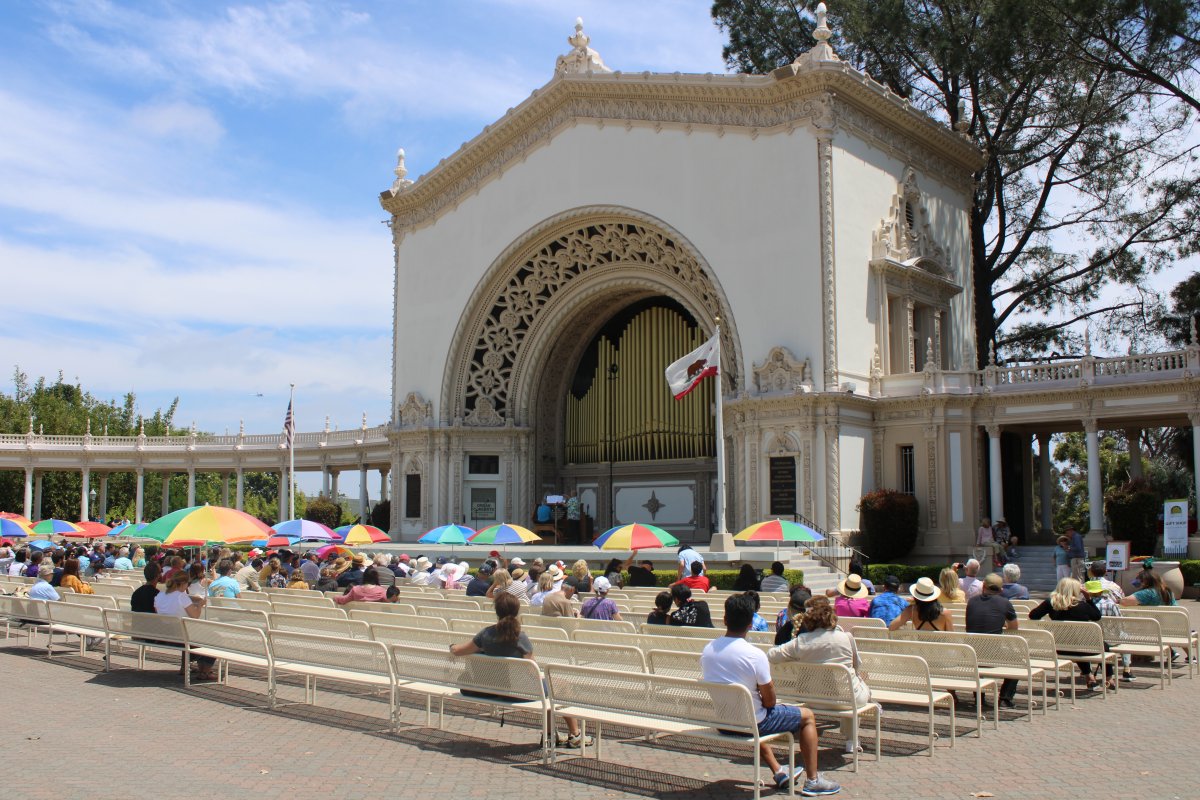
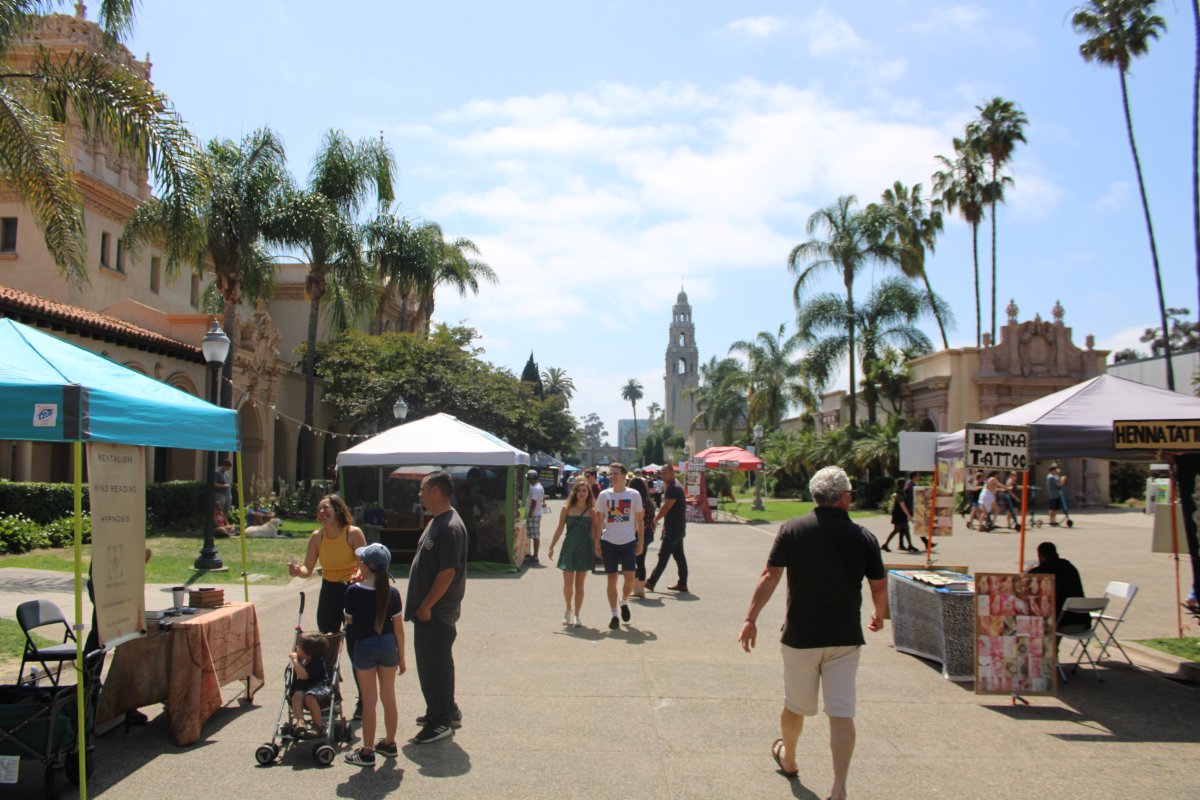
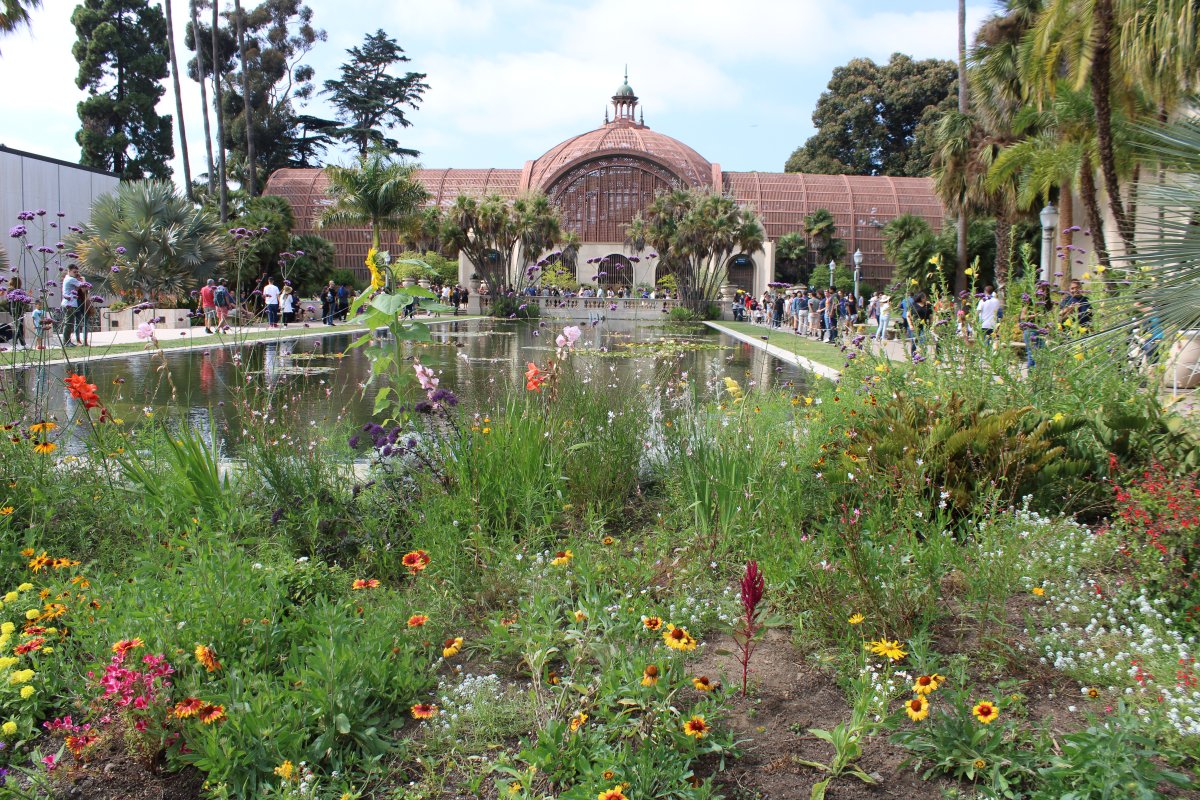
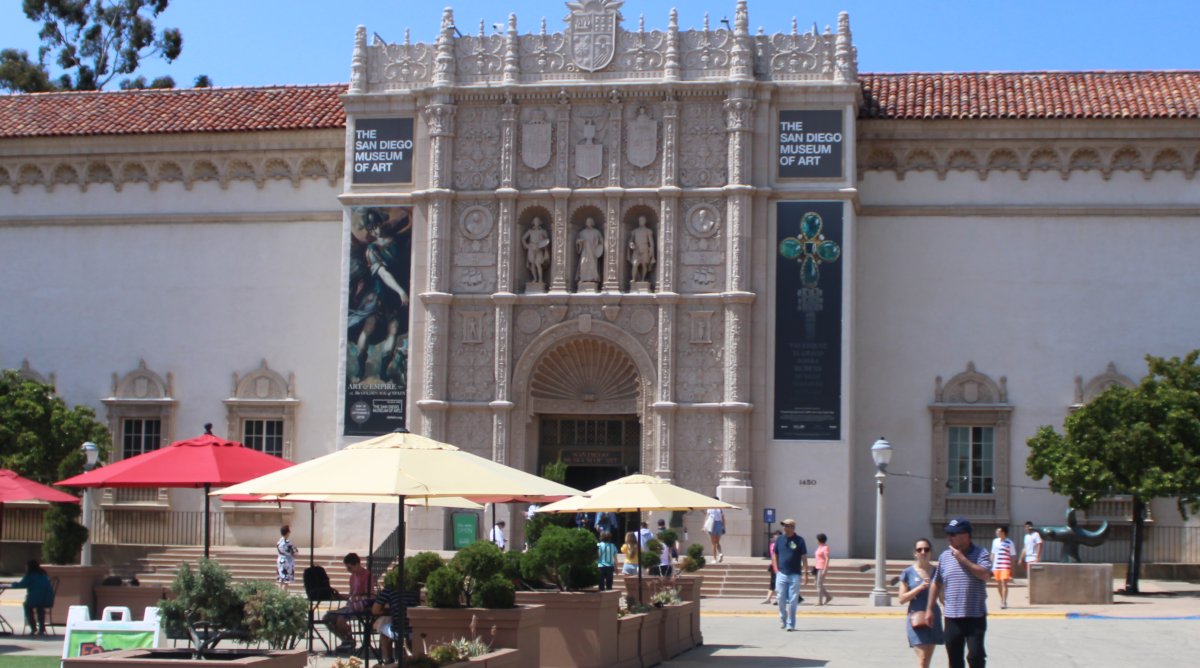

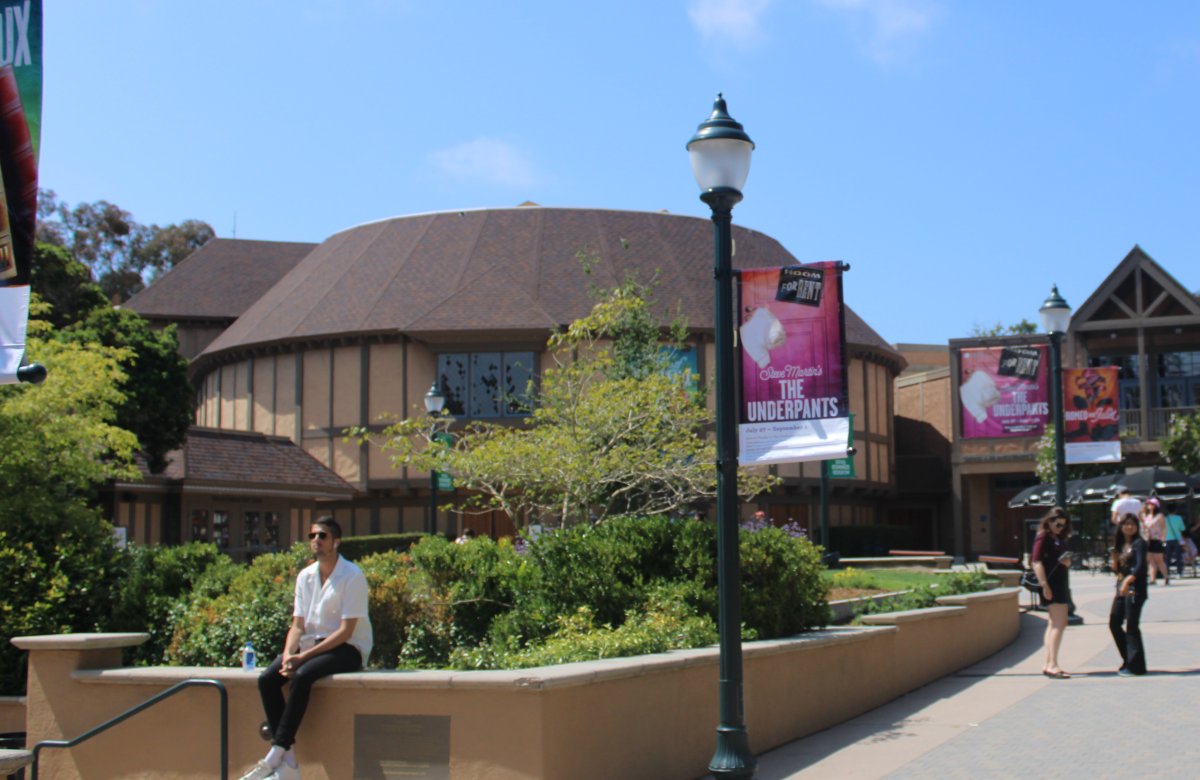
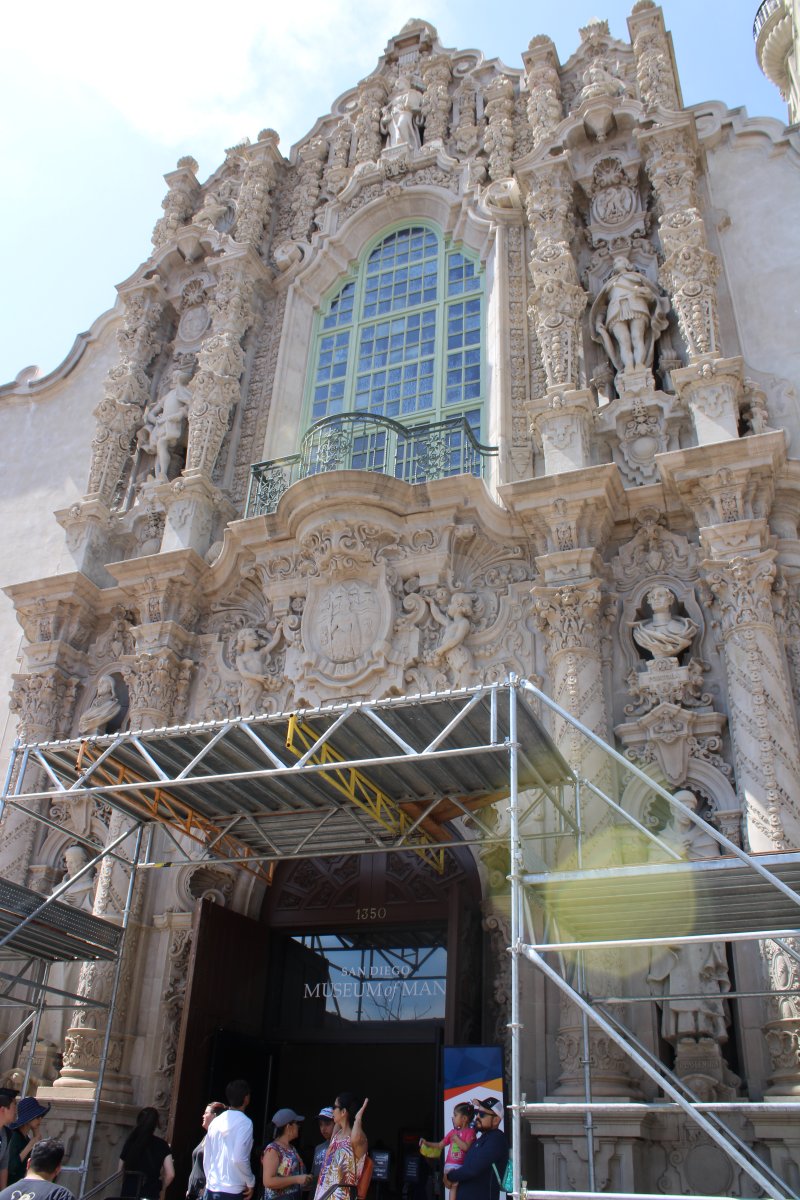
This was the ony thing inside I found interesting. But mostly everything else politically correct propaganda. Oh, and a special exhibit on cannibalism. THAT was uplifting. [sarcasm]
There were so many other museums in Balboa Park other than this one that are probably worth seeing: Automotive Museum, Botanical Garden, Natural History, Museum of Art, San Diego History, etc.
